An amusing (yet also depressing) reminder that comics can be awesome:
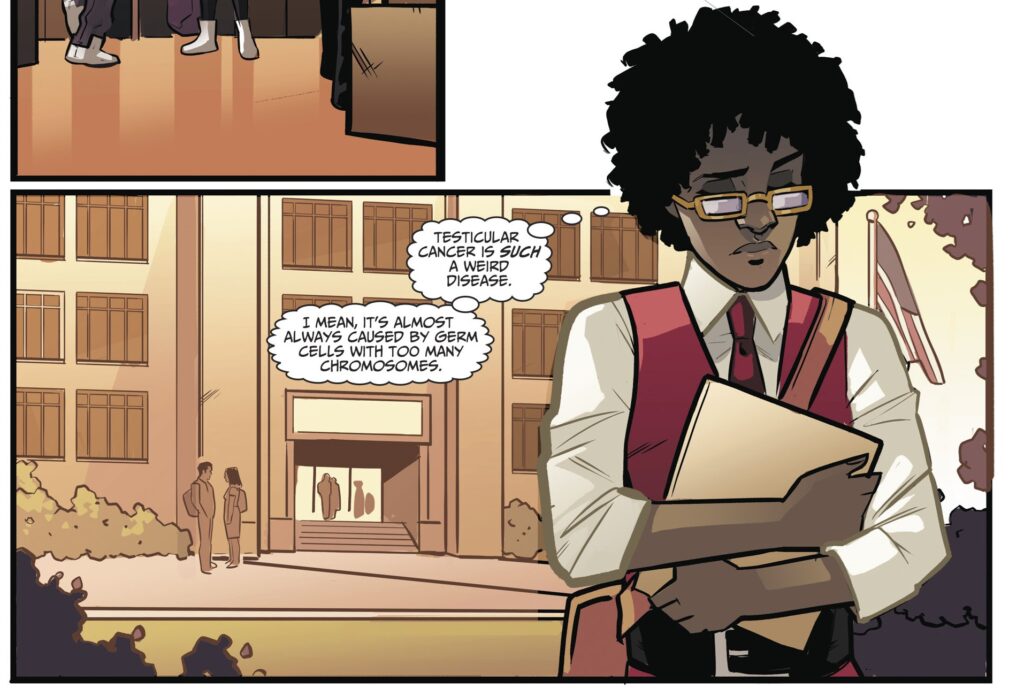
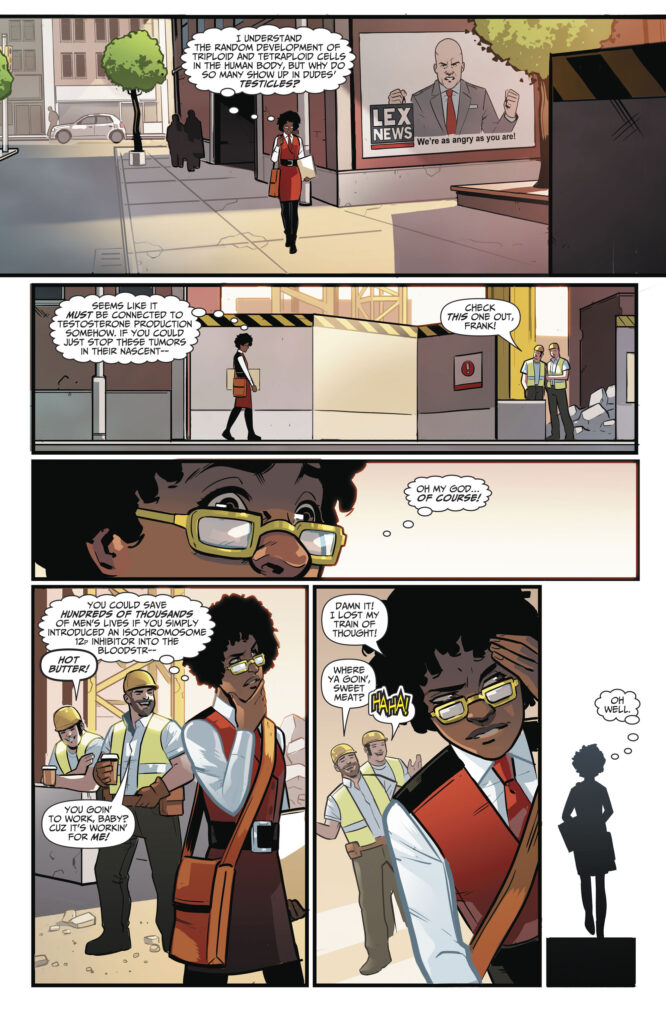
Wonder Twins #4
An amusing (yet also depressing) reminder that comics can be awesome:


Wonder Twins #4
Along with Alan Grant and Denny O’Neil, Ty Templeton is one of the core writers who has defined my platonic ideal of Batman comics. In fact, his work on the Batman Adventures line in the 1990s / early 2000s is so pitch-perfect that, for years, I’ve been struggling with how to approach a post on Templeton other than to say ‘This is how Batman stories are done. Everything else are more or less interesting departures and variations.’
Below, you’ll find my attempt to be a bit more precise.
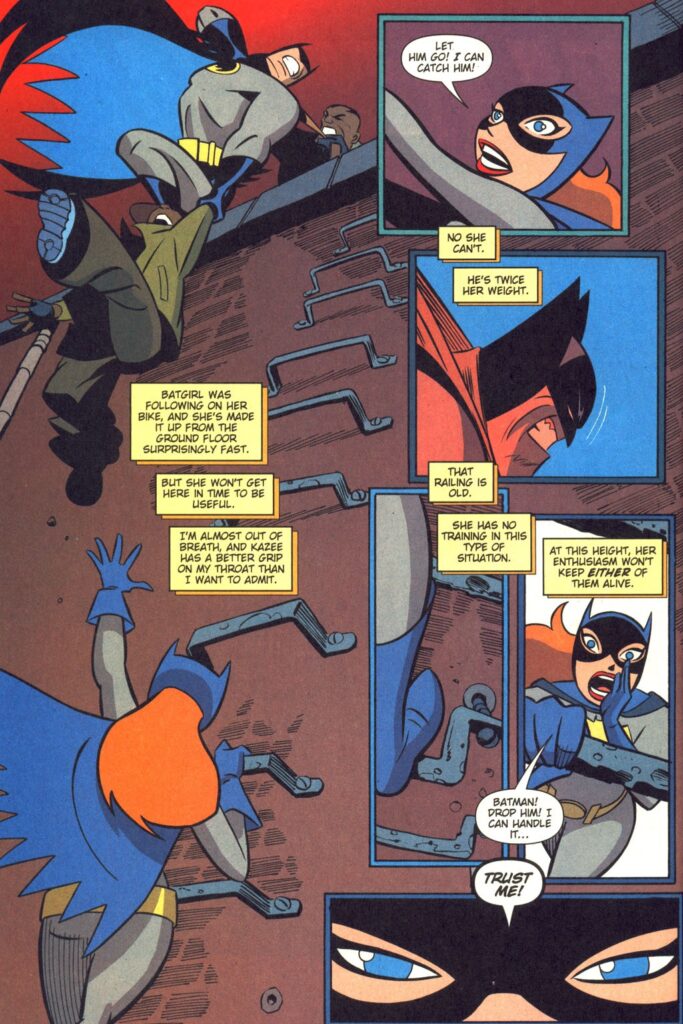
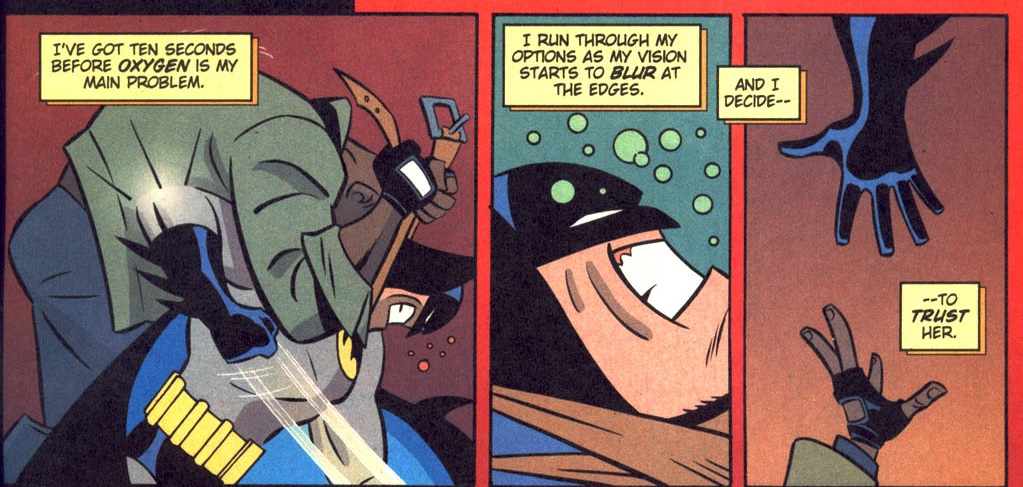
Batman Adventures (v2) #7
The first thing to highlight is that Ty Templeton ‘gets’ Batman himself, namely the necessary balance between the character’s dark side (obsessive traumatized child) and his more compassionate and joyful features (although driven by the desire to protect people, he’s also a rich dude who clearly has a blast playing with his toys). Notice, for instance, how the scene above nails the Caped Crusader’s clear-sided, methodical inner voice, but doesn’t forget to counterbalance his hyper-rational calculations with an emotional dimension.
Indeed, one of the things I most like about Templeton’s take on Batman is that this is a mature, well-adjusted figure (for Gotham City standards) who feels comfortable and confident in what he is. Rather than having him constantly brood or struggle with the temptation of going over the edge, these stories convey the Dark Knight’s painful origin and obsessive behavior through poignant moments and sporadic exchanges succinctly reminding us that all the dress-up, codenames, and gadgets are ultimately ways of coping with the hurt that came from the sudden loss of his parents when he was a kid.
One of the ways Templeton – or, as he sometimes likes to sign, Ty the Guy – handles this is through recurrent allusions to Batman’s traumatic relation with guns:
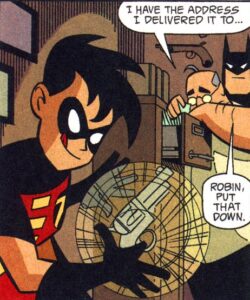
Gotham Adventures #6
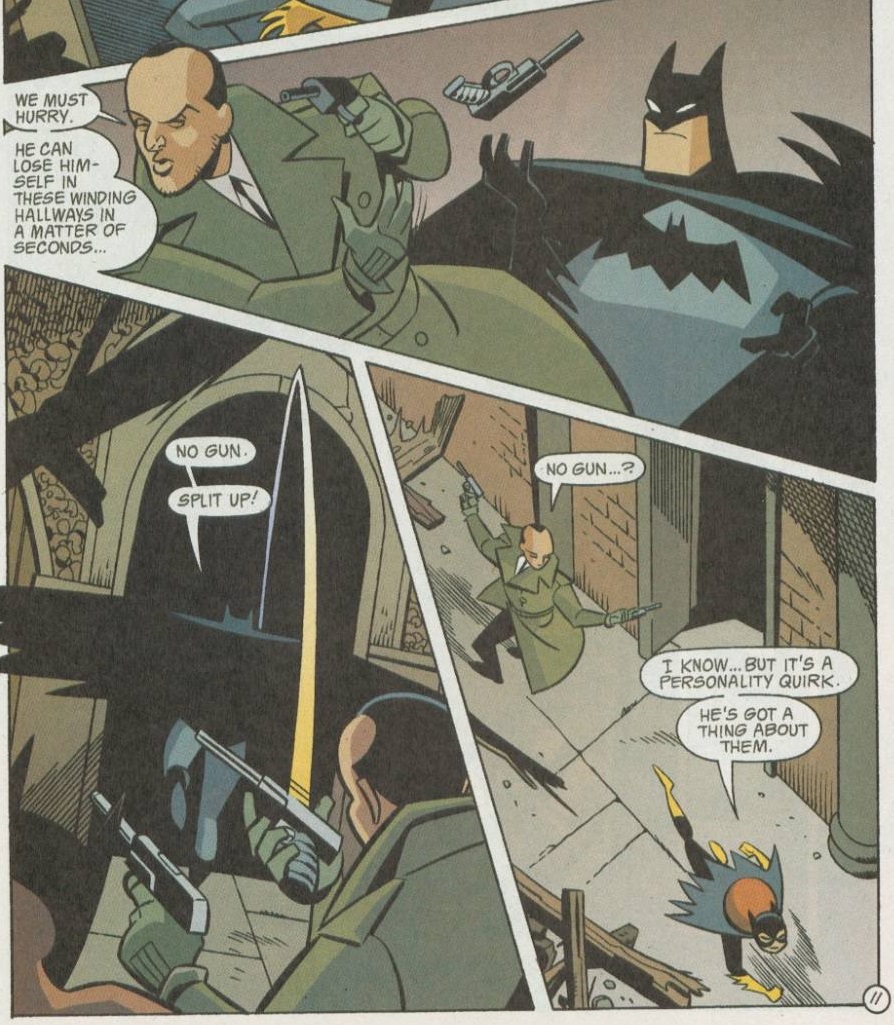
Gotham Adventures #8
Ty Templeton eventually addressed the gun issue head-on, in Gotham Adventures #9, but for the most part it remained a character trait rather than a theme to be explored in detail. These are committedly fun comics about disturbed characters, not the other way around.
Likewise, Templeton seems fully aware that the allure of Batman as a hero is that he’s a vehicle for both visual excitement (he has a cool design, so it’s neat to watch him in action) and cerebral games (he’s the smartest guy in the room, but the thing is that he often has to outsmart criminals operating according to their own bizarre, seemingly irrational logic). The most satisfying stories tend to cleverly merge these two aspects. In ‘Two Minute Warning’ (Batman Adventures (v2) #6), the Caped Crusader is tied to a chair by the Sportsmaster yet totally controls the situation, psychologically manipulating the villain’s crew while setting up the final – sports-themed – fight scene.
A classic strategy to showcase the Dark Knight’s resourcefulness is by placing him in a deathtrap and then having him escape through a combination of intelligence (figuring out a loophole in the trap) and physical prowess. Take, for instance, ‘Birdcage’ (Batman & Robin Adventures #4), where the Penguin – no doubt inspired after a Hitchcock movie night – programs three hundred and thirty-eight birds to recognize Batman’s suit and to violently attack him, bickering him to death…
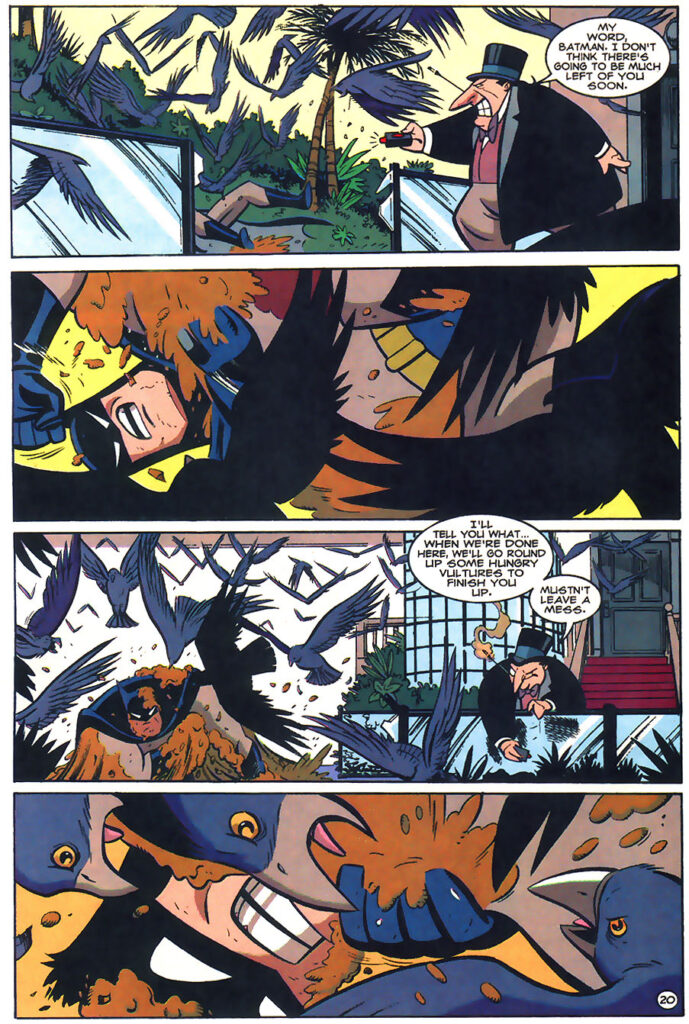
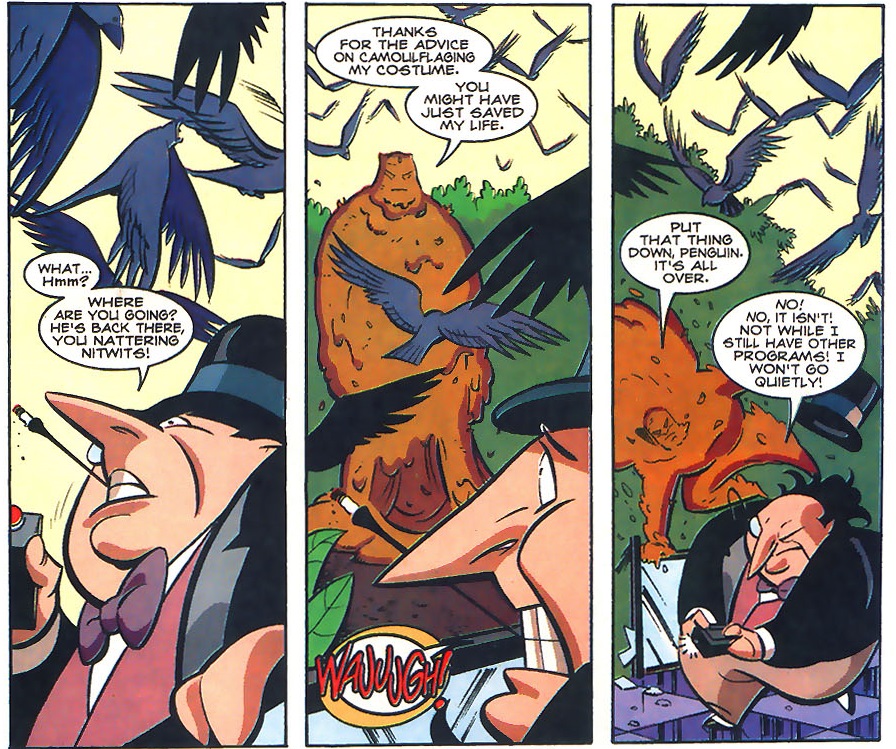
Batman & Robin Adventures #4
It’s a nifty issue all around, complete with an oddball premise (the Penguin tries to release all the birds from the Gotham Zoo because he considers them political prisoners) and a bittersweet final note (the story finishers with the Penguin, back in prison, smiling as he thinks about a toucan’s freedom).
It also brings us to the fact that, besides having a solid take on the Caped Crusader, Ty Templeton also excels at handling the various members of the Rogues’ Gallery. He has a field day magnifying their ludicrous megalomania and delusions, making their irrationality simultaneously laughable and menacing…
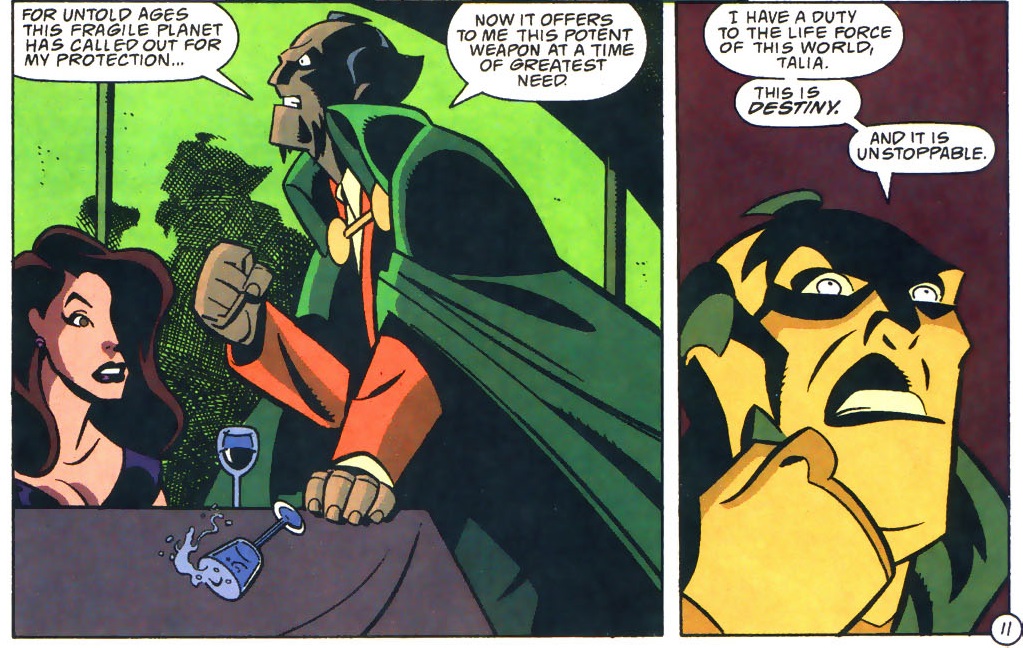
Batman & Robin Adventures #10
Templeton is particularly fond of the Joker, capturing the character’s idiosyncratic combination of cruelty and comedy, like when he had the Clown Prince of Crime trying to beat a guy to death with a bunch of bananas because ‘bananas are funny’ – even while admitting this is not practical at all (‘Boy, it takes forever to kill a guy with bananas. What was I thinking? I should have brought plantains.’).
Or this sinister moment in which the Joker riffs on Roger Rabbit:
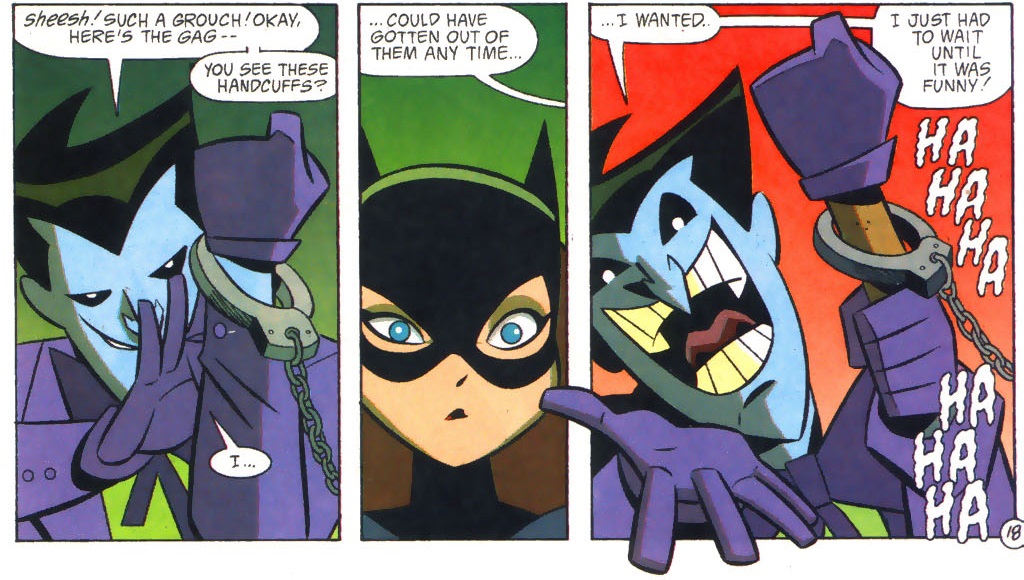
Gotham Adventures #1
Likewise, Templeton keeps going back to the Riddler, which is probably one of the main reasons why Edward Nygma became one of my top rogues. A good Riddler story involves not only amusingly intricate puzzles, but also thinking outside the box, beyond the riddles’ surface, in order to anticipate the villain’s larger plan – and Ty the Guy comes up with plenty of fresh variations on the formula. High points include ‘Why Is a Raven Like a Writing Desk?’ (Batman & Robin Adventures #21), ‘The Oldest One in the Book’ (Gotham Adventures #11), and ‘Poker Face’ (Batman Adventures (v2) #11), all of which would fit in comfortably in any anthology of the greatest Riddler tales of all time.
One of the things I really like is Templeton’s insistence that the Riddler has a subconscious compulsion: Edward Nygma cannot help himself from leaving clues for his opponents (usually through strategic word choices), even when he doesn’t want to. This notion challenges us, the readers, to pay especially close attention to the dialogue in order to pick up clues – and makes the Riddler a villain who sometimes has to fight against himself.
In fact, true to the spirit of Batman: The Animated Series (of which these comics are a spin-off) there tends to be a substantial level of ambiguity – and even empathy – regarding the rogues. ‘Birdcage’ is hardly the only issue to wrap up with a nod towards the villain’s motivations and tragic condition… For instance, while pretty much all confrontations with Man-Bat until the mid-90s had the Dark Knight ‘cure’ the creature in the end (i.e. injecting Kirk Langstrom or whomever had become Man-Bat with a serum that turned them human again), in Batman & Robin Adventures Bruce, for once, respected Kirk’s deliberate choice of continuing to look like a monster.
Thus, overall, these are fairly humanistic comics. One of my favorite issues is ‘Dagger’s Tale’ (Batman & Robin Adventures #14), where prison inmate Charlie ‘Dagger’ Dixon recounts his run-ins with the Dark Knight, humanizing all those nameless petty crooks we usually see only from the other side of the story. I don’t know if the character’s name is a tribute to writer Chuck Dixon, but it may as well be, since the comic is just the kind of stuff Dixon excels at: a one-and-done street-level yarn set in in the underworld of seasoned criminals, told with economic precision and a somewhat hardboiled edge…
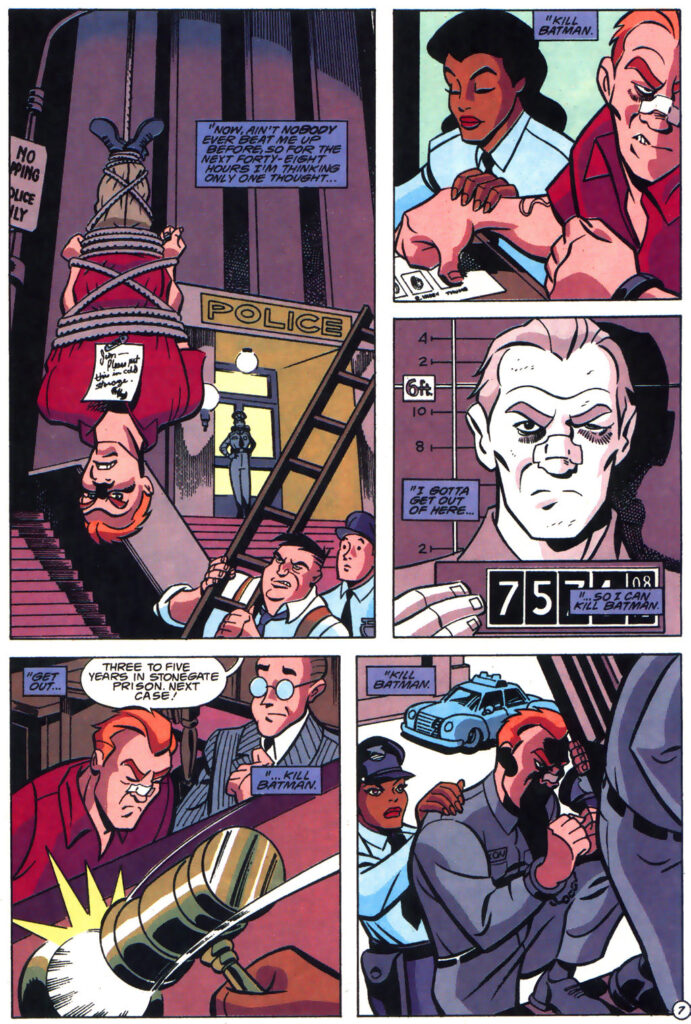
Batman & Robin Adventures #14
Looking back, I now get that almost all issues feature a relatively sympathetic approach to the Dynamic Duo’s antagonists, at some point. I don’t think I fully realized it when I was younger, but I suspect that’s part of what drew me to this material in the first place and why it had such a lasting impact… Underneath the apparently simple world, rendered with deceptively simple artwork, there is a degree of emotional nuance and a recurring acknowledgement that people tend to see themselves as the hero of their own personal stories.
This humanism was taken to a higher level in the final issue of the excellent second volume of Batman Adventures (published in 2003-2004), with a tale devoted to Joe Chill, the man who murdered Thomas and Martha Wayne. In ‘Fear Itself,’ Chill is certainly not presented as a nice guy (this is not a naïve comic) and the issue doesn’t try to downplay or justify his seminal action, but it does enable us to briefly look at the world through his perspective:
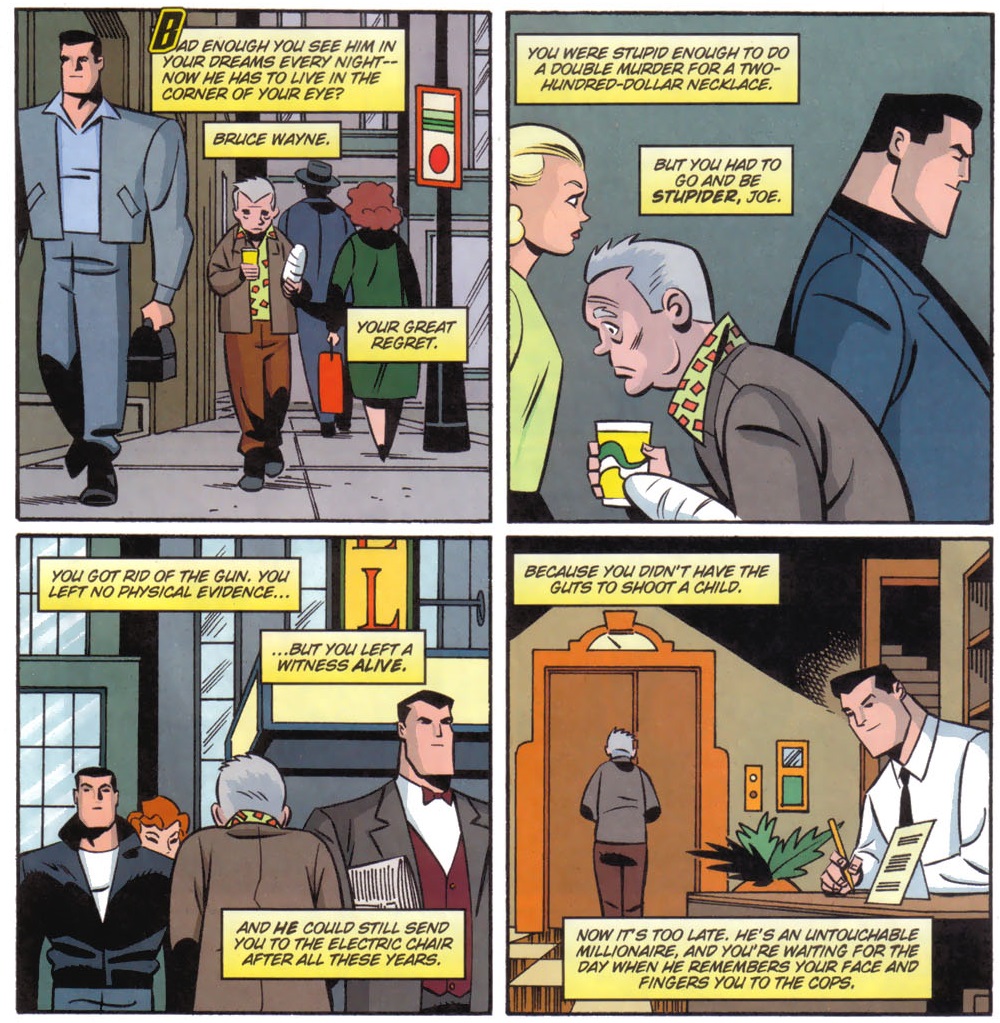
Batman Adventures (v2) #17
Drawing all the men around Joe Chill with the same (minimalistic) built and facial features of Bruce Wayne is such an effective way of visualizing the former robber’s obsessive mindset… We are never explicitly told this is a projection of Chill’s POV, but the comic trusts us to quickly get it – and to subsequently feel how much this old man is haunted by regret and paranoia. Like many of Ty Templeton’s best Batman issues, ‘Fear Itself’ was penciled by Rick Burchett and inked by Terry Beatty, who did a wonderful job, although I assume this visual choice was clearly indicated already in the script (since it pays off in the end).
Perhaps because Templeton is an accomplished artist himself, he has a strong command of the techniques of comic-book storytelling and his scripts seem full of ingenious strategies to keep things visually interesting. Check out, in the page below, how a superficially low-key scene (about Selina ‘Catwoman’ Kyle discussing bribes for local officials in order to protect the last natural refuge of Siberian tigers in Eastern Russia) was rendered in a constantly entertaining fashion:
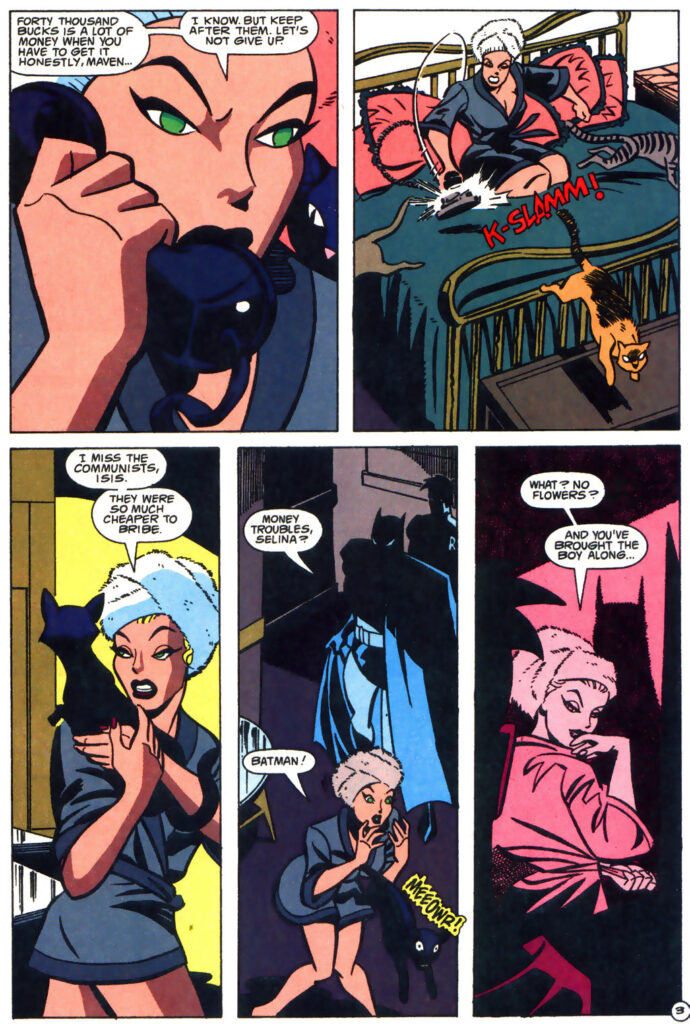
Batman & Robin Adventures #16
There is a joke, no matter how slight, in every single panel: Selina’s sardonic dismissal of honest labour, the way she scares off all the cats with one gesture, her cynical appreciation of the USSR, Batman’s euphemism, Selina’s immediate shift towards her flirtatious Catwoman persona… Likewise, there is a dynamic flow to the artwork – here penciled by Brandon Kruse and inked by Burchett – as the angles keep shifting significantly (close-up, distant framing, medium shot, then we get a perspective from above, followed by a quasi-reversal that veers close to Robin’s POV, placing Selina between the Teen Wonder’s silhouette and the shadow of the Dark Knight) and Catwoman goes through a whole range of body movements and expressions (serious negotiation, angry catharsis, venting in friendly complicity, surprise, and seductive playfulness).
It’s nothing groundbreaking – just sheer craft at its functional best, making every page a delight… This is not to say Templeton and Rick Burchett didn’t occasionally come up with some bolder tactics, like the denouement of ‘His Master’s Voice’ (Batman & Robin Adventures #7), which revolves around a brutal clash between Arnold Wesker’s split personalities: the Ventriloquist and his puppet, Scarface. There, a splash is broken into complementary page-wide horizontal panels, somehow slowing down the pace – and, thus, the touching impact – of Wesker’s devastating revelation:
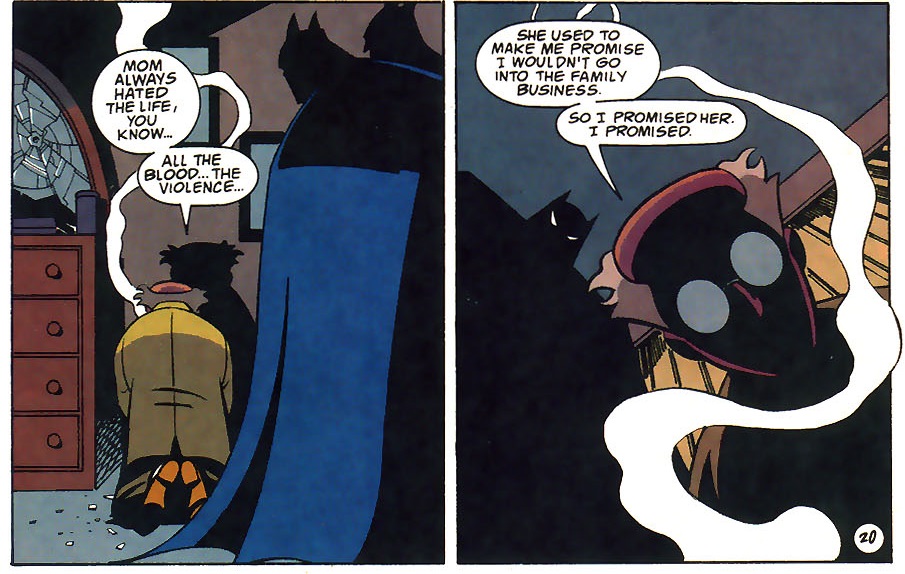
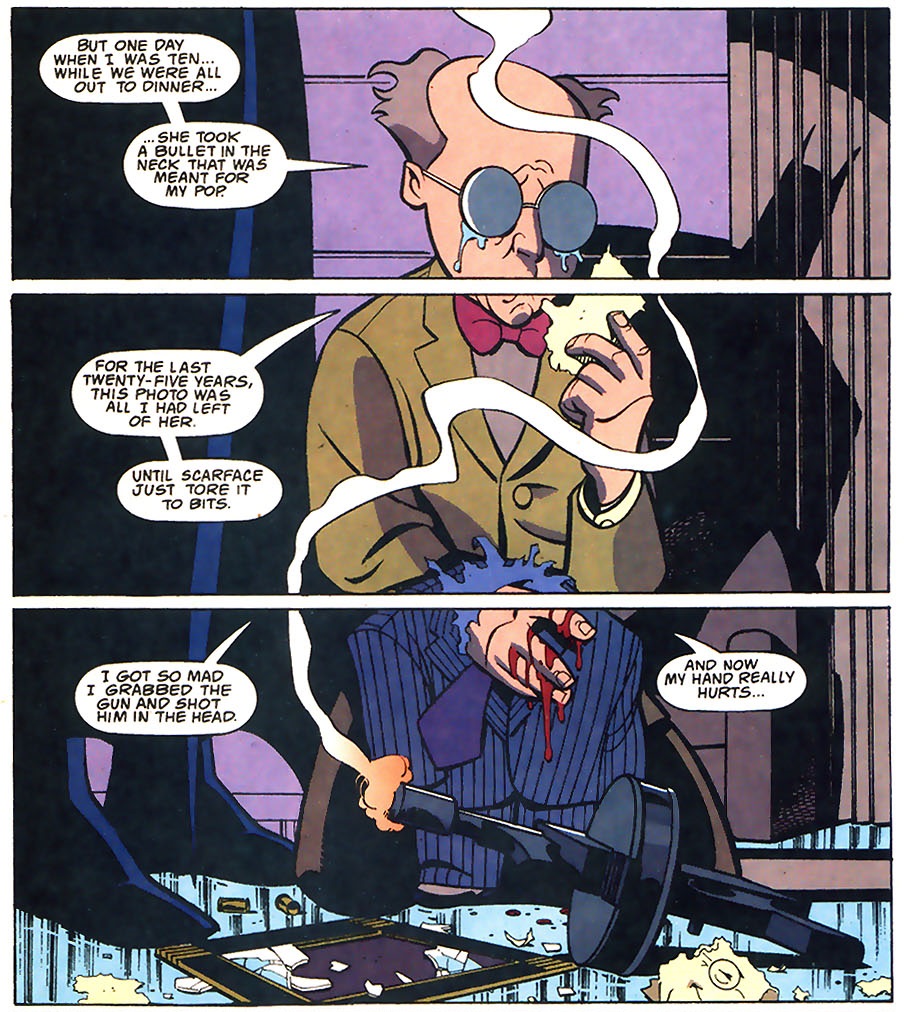
Batman & Robin Adventures #7
Besides the artificial panel borders, the cadence of the Ventriloquist’s monologue is amplified by Tim Harkins’ relatively small speech balloons and sub-balloons, including the distant positioning of the two separate balloons in the bottom panel, which creates a beat before the ‘punchline.’
Indeed, Ty Templeton didn’t just benefit from talented artists who made the most out of the stylized looks inherited from the TV show. The whole creative team was awesome, especially once Lee Loughridge became the regular colorist, often intensifying the stories’ atmosphere through selective monochromatic sequences. Plus, the series were helmed by editor Scott Peterson, who no doubt played a role in bringing together the comic’s overall tone, since he later seamlessly took over from Templeton as writer of Gotham Adventures and the quality didn’t drop a single iota.
Part of the writer-editor partnership involves maximizing the enjoyment that can come out of a book and, whether the choice came from Templeton or whether it was steered by Peterson, one more thing these series have going for them is that they deliver accessible one-and-done tales, which is a format that served Batman comics really well in their first four decades. What’s particularly impressive is that they often manage to have this cake and eat it too: while individual issues read as satisfying self-contained yarns, they also subtly draw on continuity, rewarding the most completist fans.
A few issues are sequels to episodes from the TV series, albeit conveying enough backstory that anyone can pick them up without getting lost. If you go through Gotham Adventures in order, you’ll be able to spot links that form an overarching saga about the League of Assassins, although no chapter is required reading in order get the next one. Another example of working simultaneously with and without continuity, also in Gotham Adventures, are the discreet sequels to some of the best issues Templeton had written in previous series. For instance, ‘Just Another Day,’ ‘Last Chance,’ and ‘Dagger’s Secret’ (Gotham Adventures #3, #6, and #7) expanded the character arcs from ‘Just Another Night,’ ‘Second Chances,’ and ‘Dagger’s Tale’ (The Batman Adventures #33, Batman & Robin Adventures #14 and #15) without exclusively relying on – or even expecting – readers’ familiarity with those other issues: these new tales could be read on their own and they were still great.
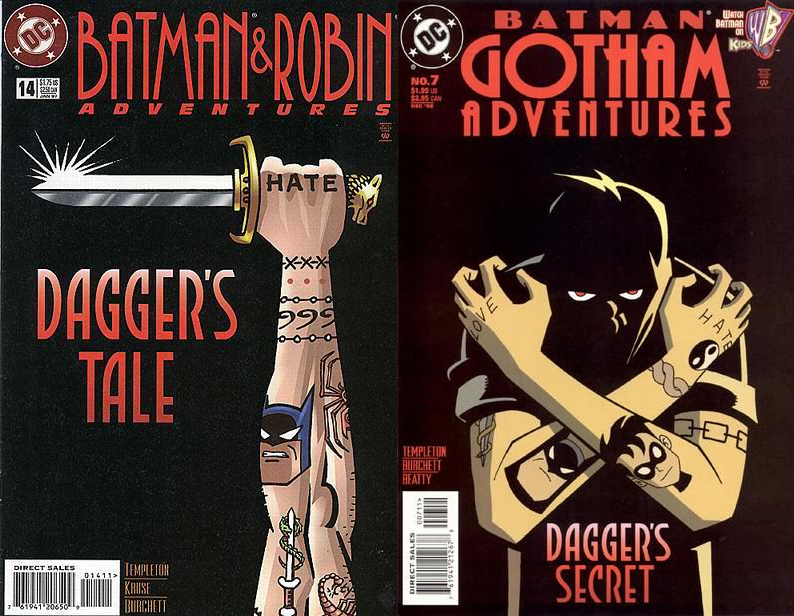
Ty Templeton further flexed his storytelling muscles when he rebooted Batman Adventures in 2003 (now edited by Joan Hilty). This time, the continuity was much tighter from issue to issue, but once again every installment was so packed that they never felt like mere ‘chapters.’ In fact, each issue usually contained two stories, one that Templeton wrote, with art by Rick Burchett, and another one he drew, scripted by Dan Slott (with whom Templeton has frequently collaborated over the years, including as co-writers for the fun Superman Adventures #40 and for an arc of She-Hulk). That run was hands-down one of the high points of whole Batman franchise and it’s a shame it didn’t last more than seventeen issues… As happy as I was to see the return of this iteration of the characters in 2020, with Batman: The Adventures Continue, my excitement was somewhat mitigated by the fact that Templeton is only drawing the new comics, without scripting duties. I would’ve loved to see what he had planned ahead.
Ultimately, regardless of spinning off from an animated show and being ostensibly geared towards younger readers, Templeton’s comics often feel like a ‘purer’ version of Batman’s world than the one in the ‘official’ stories from DC’s core continuity. In other words, I totally get his statement when he first left the book, after almost four years of scripts:
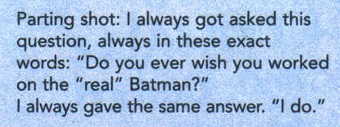
Gotham Adventures #14
They say the internet is mostly about images of kittens and, lately, of war, so I suppose this week’s reminder that comics can be awesome is Gotham Calling’s contribution to both fields…
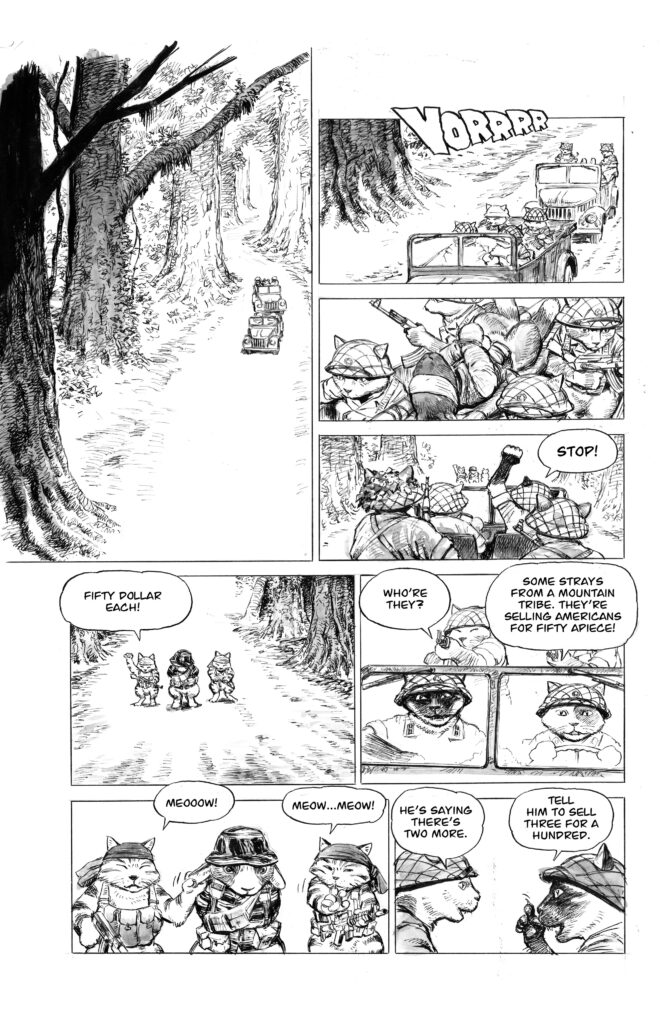
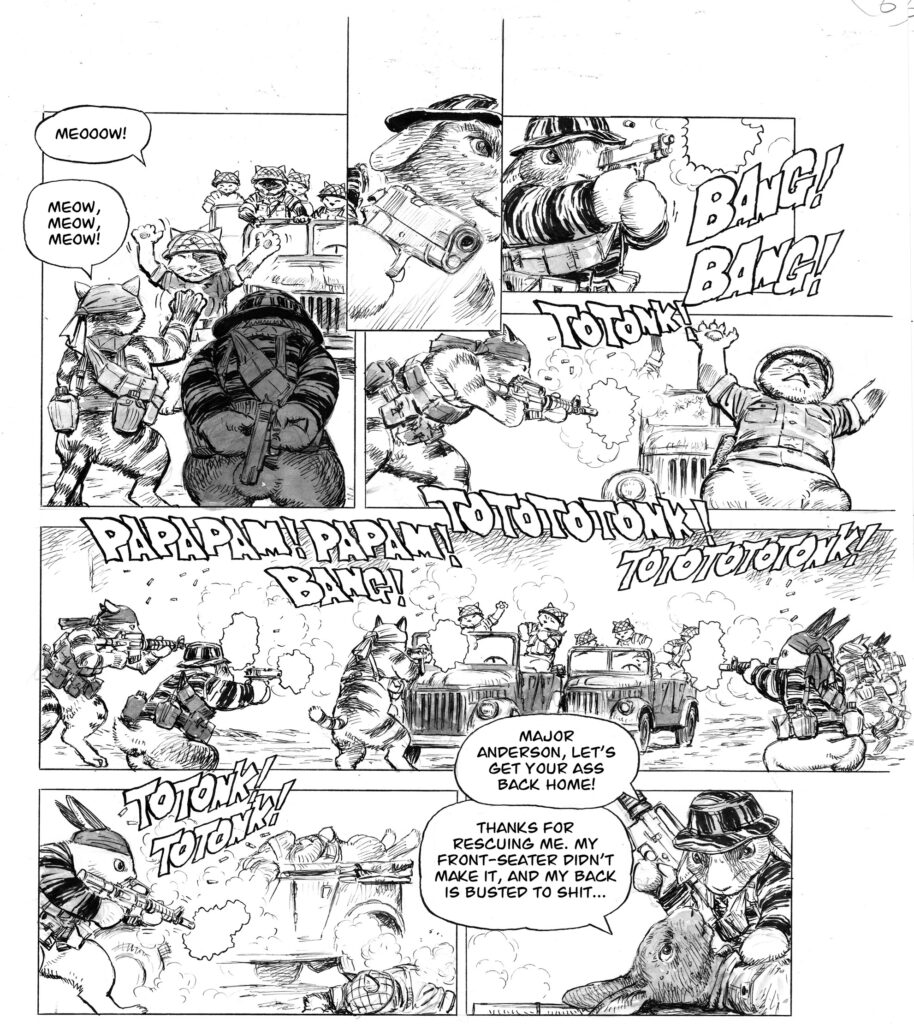
Cat Shit One #1
Overall, this is one of the most coherent installments of Gotham Calling’s canon of Cold War cinema. For one thing, most of the entries below are political dramas (a genre I adore) in one way or another… At a time when Marvel was translating Cold War politics into jingoistic entertainment for youngsters, Hollywood increasingly churned out ‘grown-up’ speculative fictions about where the world might be heading in the near or far future (clearly, we were in the aftermath of the Cuban Missile Crisis, when shit just got real). To be fair, there was already quite a long lineage of films dramatizing the workings of government (going at least as far back as 1933’s Gabriel Over the White House, a jaw-dropping fantasy where the US president becomes a socialist dictator who solves the world’s problems), but the 1960s were a particularly high point for this type of movies, both within and outside the United States (I didn’t add it to the list because it isn’t as directly related to the Cold War, but Francesco Rosi’s Hands Over the City is also phenomenal). That said, for contrast, I’ve also included a couple of a entries focused on a new generation which grew up in the Cold War but didn’t necessarily identify with it in the same way as their parents.
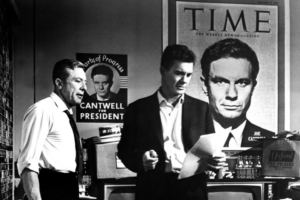
61. The Best Man (USA, 1964)
The bitter political melodrama The Best Man portrays the race for a presidential nomination with notable authenticity (for the most part, at least). Needlessly to say, among the differences between the leading candidates (including Henry Fonda, playing, as usual, the face of liberal politics) are their views on the threat of communism and the ‘missile gap.’
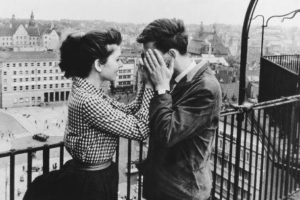
62. Divided Heaven, aka The Divided Sky (East Germany, 1964)
East German cinema produced a number of fiction and non-fiction films about the Berlin Wall, usually validating the reinforced division (like in For Eyes Only, which I brough up last time). By the mid-60s, however, the focus had begun shift, with filmmakers emphasizing the painful personal toll of separation. Adapting a best-seller by Christa Wolf (who co-wrote the screenplay), Divided Heaven is a devastatingly beautiful drama about a doomed romance, told through a complex flashback structure and startling stream-of-consciousness editing, which manages to criticize some aspects of the GDR driving its citizens away (including the intolerant hardliners and a lack of opportunities) while being much more candid, nuanced, and even-handed than any western movie about this subject. Much of the story takes place shortly before the Berlin Crisis, but the Wall looms implicitly over the entire picture and is powerfully evoked through various visual motifs splitting up the screen.
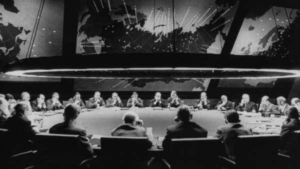
63. Dr. Strangelove or: How I Learned to Stop Worrying and Love the Bomb (UK/USA, 1964)
Deterrence based on mutually assured destruction rests on the assumption that everyone will act logically, but what happens when irrational, stupid, and fanatical people get into positions of power? That’s right, we’ve finally arrived at what is commonly – and deservedly – considered the greatest Cold War film classic… In this dark satire of the balance of terror, a deranged Air Force general manages to order an attack on the USSR (by exploiting a logical loophole in the system), so it’s up to the US President, an RAF captain, and a mad scientist (all of them played by Peter Sellers) to figure out how to prevent WWIII. Like other Stanley Kubrick pictures, Dr. Strangelove is about the dehumanizing logic of war, but on a larger scale and much funnier than usual. That said, rather than approaching the possibility of nuclear annihilation through all-around absurdist humor (like The Bed Sitting Room a few years later), the movie begins with a very deliberate deadpan tone before methodically ramping up the grotesquerie and silliness.

64. Fail Safe (USA, 1964)
Like in Dr. Strangelove, we get to be a fly-on-the-wall witness to top-level decision-making during a nuclear crisis, leading to an equally unforgettable ending. Despite the obvious links, however, Fail Safe stands apart from Kubrick’s masterpiece – and not just because of the very different tone (earnest drama instead of farce). Rather than human irrationality overriding the system, Fail Safe exposes a flawed system to begin with, one where we’re a mere technical glitch away from large-scale tragedy. Its polemic about human agency vs overreliance on impersonal computers, therefore, seems enduringly relevant today. (This also completes a trilogy of smart political thrillers starring Henry Fonda, whom we have seen trying to become Secretary of State in Advise & Consent and presidential candidate in The Best Man.)
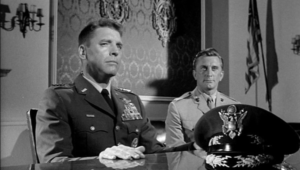
65. Seven Days in May (USA, 1964)
Then again, when the US government tries to pursue nuclear disarmament, it has to face the hawks’ staunch opposition at home. Set in the near future, this gripping web of political intrigue showcases how the global conflict corrodes domestic democracy. Note that, while Seven Days in May is Rod Serling’s first script on this list, by then he had already written some of the most iconic pieces of Cold War fiction for The Twilight Zone (not to mention the UN-commissioned TV special Carol for Another Christmas, a comically heavy-handed update of Dickens’ novella where the ghosts convert a right-wing isolationist to the cause of global cooperation!).
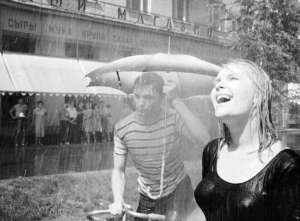
66. Walking the Streets of Moscow (USSR, 1964)
Light as a feather, Walking the Streets of Moscow offers a lyrical, quasi-utopian depiction of everyday life in the Soviet capital. Bodies flow through urban space as if in a dance amidst young love and artistic dreams, the competition with the West largely implicit in the inconvenient military service and in the annoying neighbor who keeps playing records in English… This may not be what life was like – but it shows you what it allegedly aspired to be.
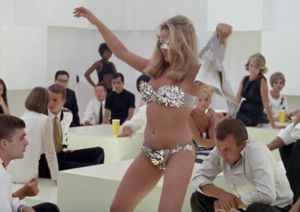
67. The 10th Victim (Italy/France, 1965)
Indeed, not everyone imagined the future as one of grey totalitarian takeover or nuclear conflict. Best remembered for Ursula Andress’ gun bra, The 10th Victim envisages doing away with wars by letting humanity vent out its violent instincts in the form of a global game where selected people hunt and kill each other. In a liberating contrast to Cold War grimness, we thus get the usual motifs of suspicion and deception displaced onto a psychedelic world where social and aesthetic values have evolved in ostensibly weird ways (including a bourgeois appreciation of comic books!). Beautifully shot, this is a cool, swingy mix of humor, sex, and fashion show, offering quite a prescient satire of reality TV. (1969’s The Gladiators and 1975’s Rollerball developed a similar premise, but through a realistic, downbeat tone that does not feel as fresh.)
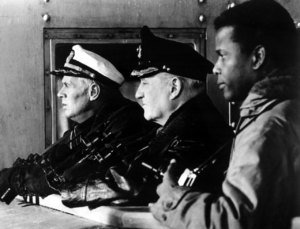
68. The Bedford Incident (UK/USA, 1965)
The Bedford Incident reimagines Moby Dick off the coast of Greenland – only, instead of a white whale, the captain here is obsessed with hunting a Soviet submarine. An underappreciated gem.
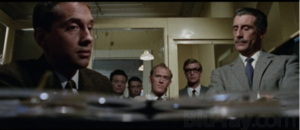
69. The Ipcress File (UK, 1965)
The first (Western) anti-Bond thriller on this list, The Ipcress File takes what could’ve been the premise of a 007 mission – involving a missing scientist and mind control – and amusingly assigns it to Harry Palmer, a low-level anti-hero dispassionately working for a dreary, underfunded, bureaucracy-laden intelligence service. I’m sure Mick Herron is familiar with this one.
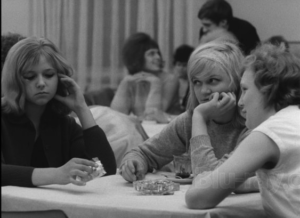
70. Loves of a Blonde (Czechoslovakia, 1965)
Concerned with the many frustrated young women working in his factory, in a village in the middle of Czechoslovakia, a supervisor convinces the People’s Army to change its military manoeuvres so that the soldiers can join the local girls for a big dance. Arguably the most delightful film of the Czech New Wave, Loves of a Blonde is a charming low-key dramedy with naturalistic performances, semi-improvised dialogue, and a delicate, organic pace. You can find in it a bittersweet depiction of life under socialism or a more universal tale about the perennial theme of young people looking for love (and sex).
A Lucky Luke reminder that comics can be awesome:
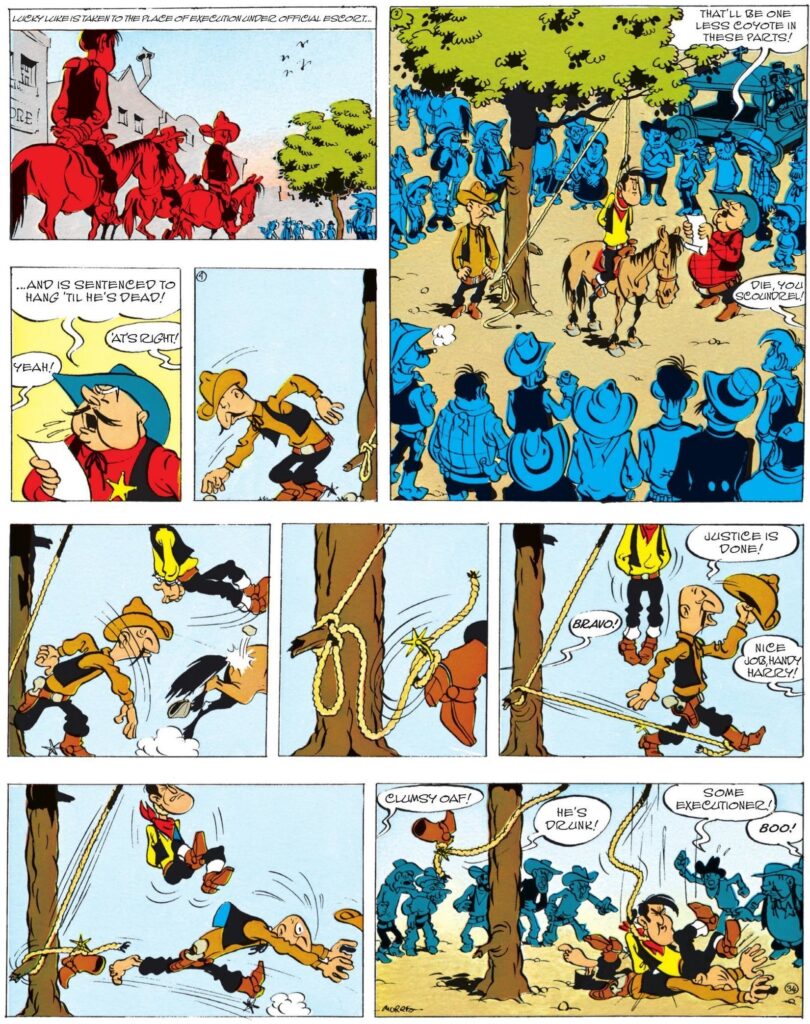
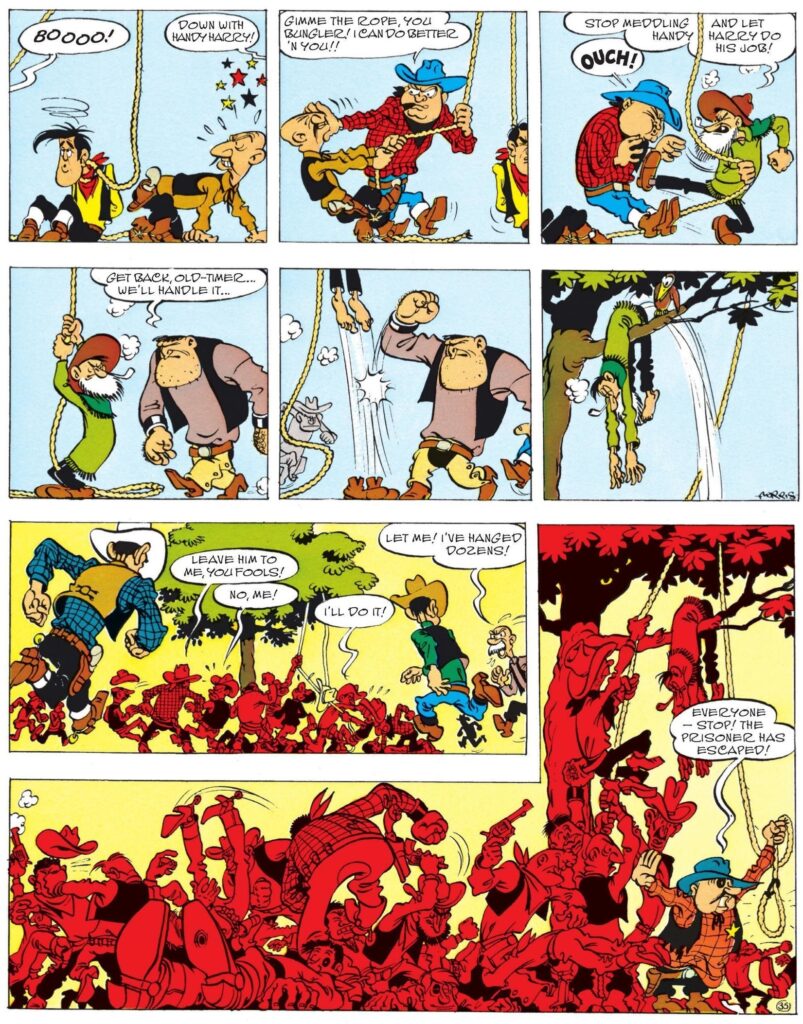
Lucky Luke’s Double
As mentioned before, I’m a huge fan of 2000 AD’s covers, especially of the way they spotlight the amazing character designs in those comics. With that in mind, this week I want to single out a specific subgenre of cover artwork, namely headshots that call attention to the facial features of the vast cast that has populated this anthology throughout the decades.
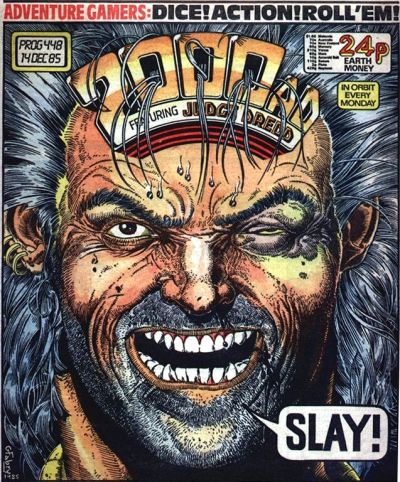
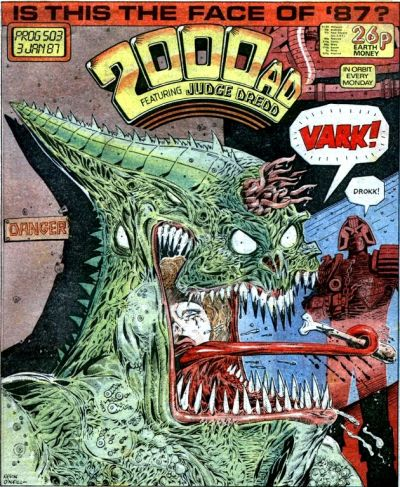
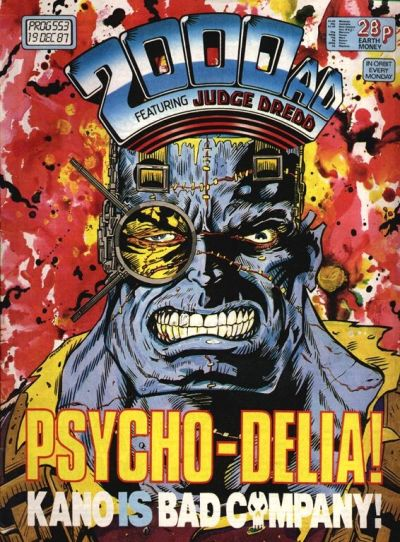
The features of the ‘cover models’ are often grotesque. This matches the magazine’s scornfully caustic outlook of the world as a vile, corrupt, and ultimately ridiculous place.
A key component of 2000 AD’s attitude is that it taps into a ferociously critical branch of science fiction, one that harkens at least as far back as the surreal Taylorist dystopias of Yevgeny Zamyatin’s We and Aldous Huxley’s Brave New World in the early 20th century, and which was kept alive by authors like Octavia E. Butler, with her gritty Parable book series in the ‘90s about a near-future civilizational collapse. Hell, social commentary has become such a standard staple of futuristic sci-fi that even a full-on spectacle shamelessly laden with product placement, such as Michael Bay’s The Island, can contain – seemingly without a trace of self-awareness – a populist indictment of corporate capitalism and celebrate the liberation of alienated workers.
The mix of angry defiance and commercial entertainment is plastered all over these covers…
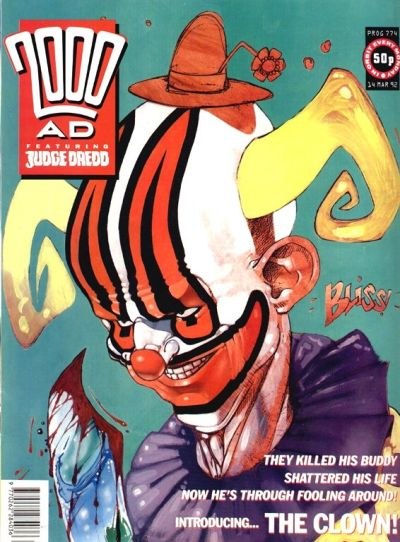
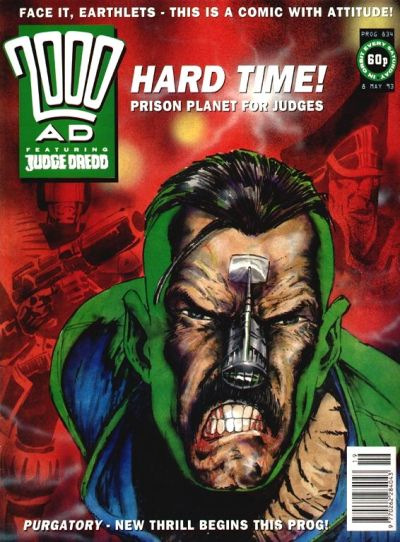
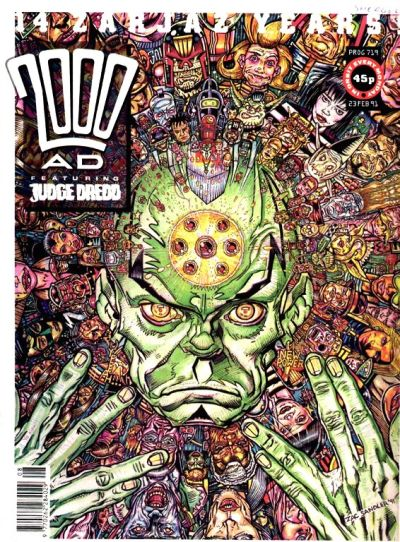
Arguably the filmmaker that best captured the spirit of 2000 AD was Paul Verhoeven with his cyberpunk trilogy of RoboCop, Total Recall, and Starship Troopers. The latter movie, in particular, was infamously derided as a pure fascist fantasy, its ironic touches deemed insufficient to counterbalance the fact that the protagonists you’re most likely to root for represent an authoritarian civilization fighting an enemy that seems to come out of Nazi propaganda… Similar criticism has been geared towards 2000 AD’s most popular strip, Judge Dredd, but in both cases I’d say it’s too simplistic to merely consider them proto-fascist narratives; I see them more as works about the appeal of fascism (the same applies to Tom Strong, as compellingly argued by Geoff Klock in How to Read Superhero Comics and Why). You may not find fascism appealing, but the recognition that there is something alluring, cathartic, and libidinal about that ideology is not even a provocation anymore – if anything, it’s an invitation to try to understand the rise of the alt-right, from Trump to Bolsonaro.
I keep finding echoes of the visually experimental and politically explosive iconoclasm of 2000 AD – and of Verhoeven, I suppose – in comic books like Marcos Prior’s and David Rubín’s Grand Abyss Hotel, Christopher Sebela’s and Hayden Sherman’s Cold War, or Juan Doe’s Spectro, although they’re bound to be informed by many other sources of inspiration (in the former’s case, certainly Frank Miller and Paul Pope… weirdly combined with the Frankfurt School of Critical Theory).
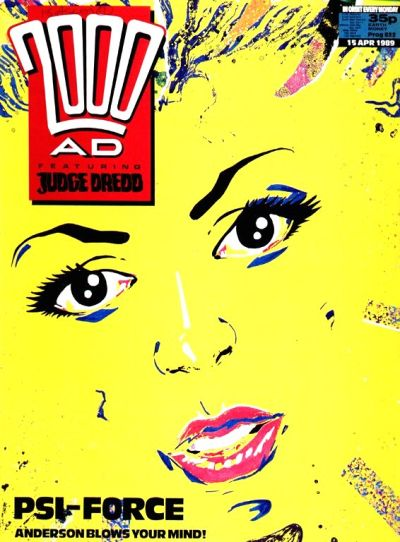
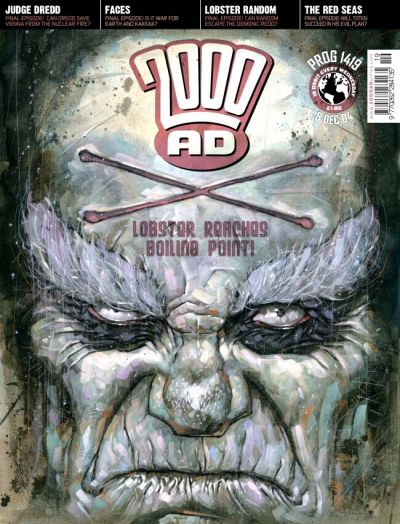
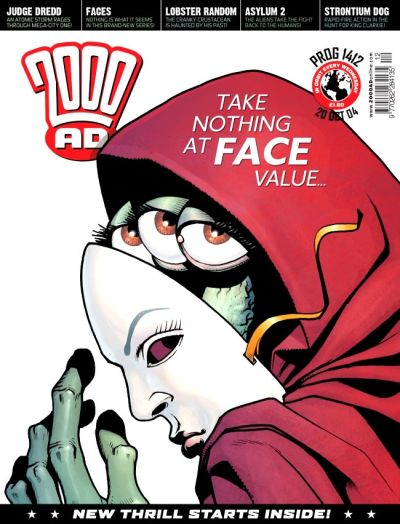
As critics and the magazine’s publisher itself keep remind us, often with a certain degree of self-mythologization, 2000 AD comes from a dark place (its seminal decade mostly coincided with Thatcherism), albeit not devoid of joy (in line with its counter-cultural sensibility). Over the years, creators have taken the chance to cut loose in terms of exaggeration and deformity, as highlighted by the close-ups in the covers. Artists with a remarkably widespread range of styles have had a go at this type of image, halfway between a mugshot and a classical portrait, showing off by detailing not only different faces, but also very different attitudes and expressions. In doing so, they have rendered a set of visceral personifications of society’s rapaciousness and monstrosity.

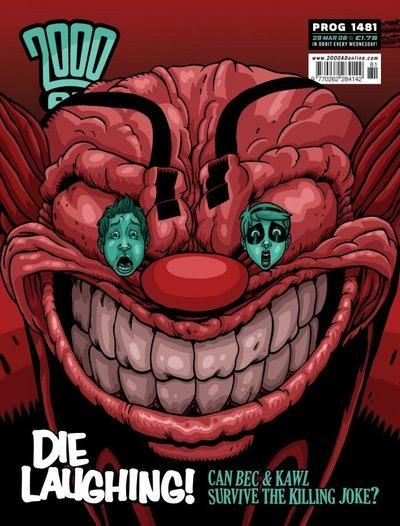
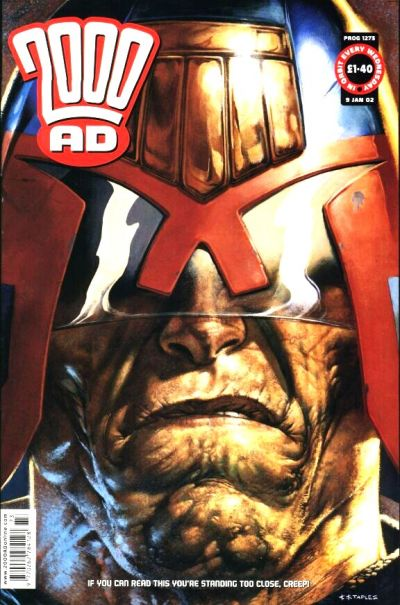
One more Quino reminder that comics can be awesome:
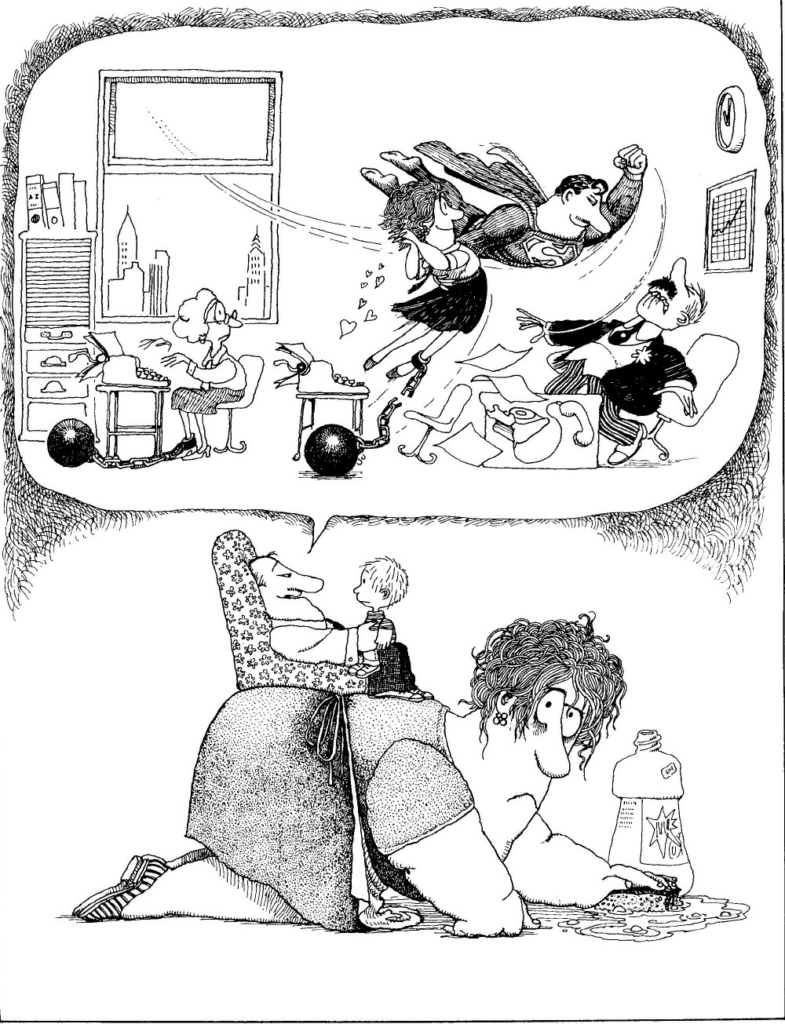
Sí… carniño
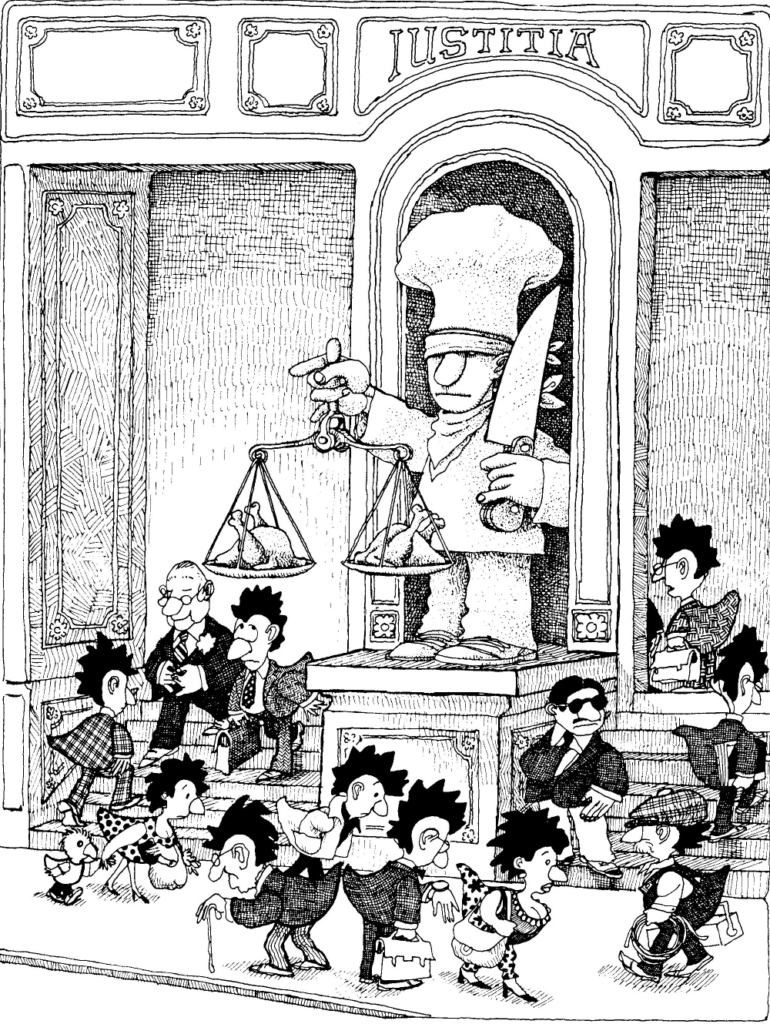
Yo no fui!
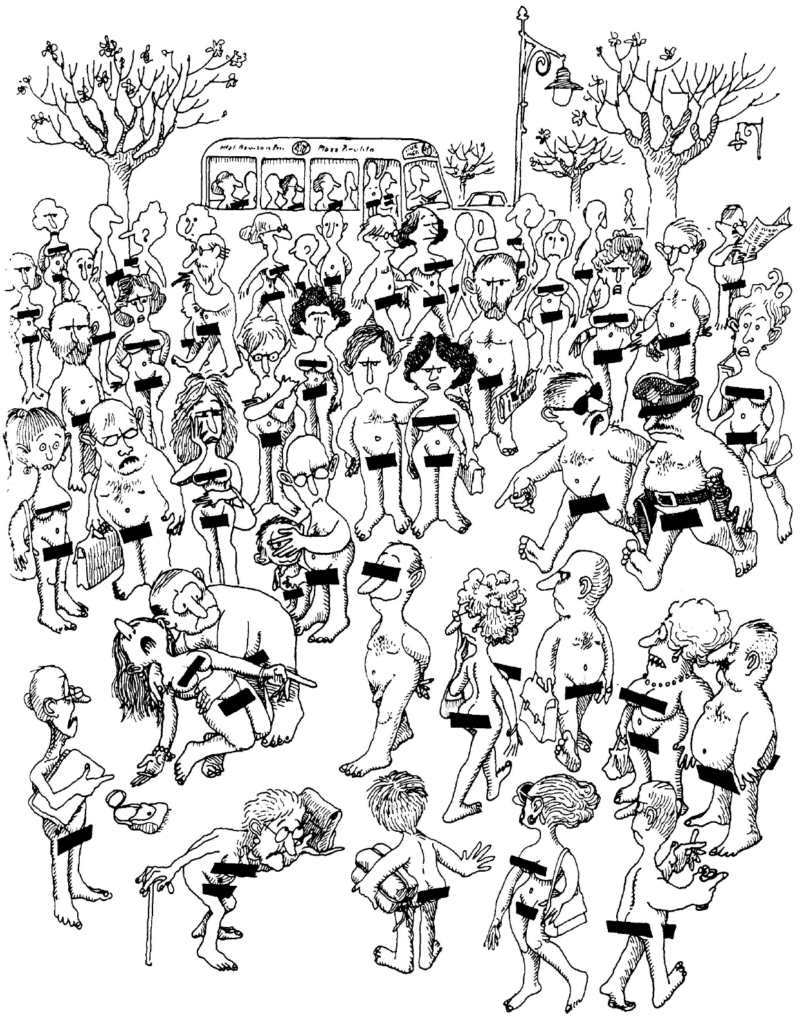
Yo no fui!
We’re halfway through Gotham Calling’s tour of Cold War cinema. By this stage, it isn’t just the world situation that is rapidly changing, but filmic language itself. Apart from addressing the conflict from multiple national and ideological perspectives, most of the films below impress for the way they challenged the whole medium.
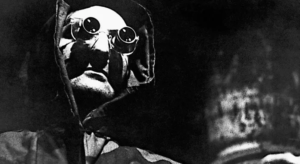
51. La Jetée (France, 1962)
Let us begin on a particularly high note… Although just 28-minutes long, the massively influential La Jetée has it all: World War III, post-apocalyptic dystopia, utopia, nostalgia, romance, telepathy, time-traveling paradoxes, and an experimental approach to visuals that still stands out today.
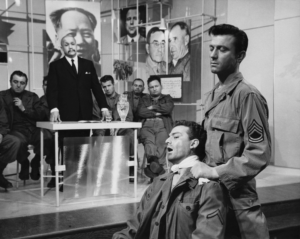
52. The Manchurian Candidate (USA, 1962)
A hallucinatory conspiracy yarn about soldiers brainwashed in the Korean War (one of whom is the stepson of a McCarthy-like senator). Way more bonkers than British cinema’s own quasi-simultaneous take on the brainwashing panic (the soap operatic The Mind Benders), this darkly comedic psychological thriller – which left a lasting mark in popular imagination – both caricatures the hysteria of the previous decade and disturbingly anticipates the paranoid mindset that would follow the JFK assassination. My use of pathologizing expressions is deliberate, as The Manchurian Candidate audaciously projects the protagonists’ (and presumably society’s) mental instability through disconcerting camera angles, bizarre line readings, jarring transitions, surreal imagery, and somewhat cryptic choices likely to prompt alternative readings of the story, especially regarding Eugenie’s character (2004’s remake gives this character a clearer role, but I much prefer her ambiguity here). Plus, Frank Sinatra does martial arts.
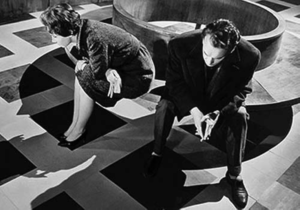
53. Nine Days of One Year (USSR, 1962)
Set in a nuclear research institute in Siberia, this remarkable drama focuses on the love triangle of a dedicated experimental physicist (who carries on despite having received deadly doses of radiation), a lively theoretical physicist (his cynical counterpart), and a frustrated wife (whose inner monologues we get to hear). As promised by the title, the film zooms in on a few selected days in their lives, grappling with dilemmas over science (from fusion power to space exploration), the political and ethical dimension of their work (should researchers be grateful for the war that funds their studies?), interpersonal relations, and, of course, mortality. Yes, it’s thematically heavy, but the cinematography and characterization make Nine Days of One Year aesthetically and emotionally rich as well.
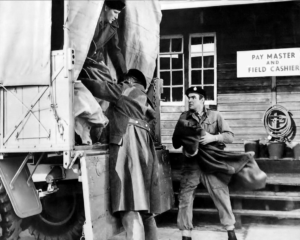
54. A Prize of Arms (UK, 1962)
Besides delivering a nail-biting heist at a British army barracks, A Prize of Arms gains an extra layer of interest because the whole thing is set against the backdrop of the Suez Crisis, so this one also works as a microcosmic illustration of the UK’s threatened – and declining – military power.
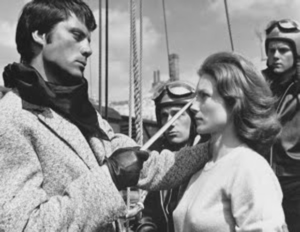
55. The Damned, aka These Are the Damned (UK, 1963 [1961])
The title evokes Village of the Damned and some of that film’s imagery does echo here, loosely, but this is a much more offbeat concoction. An eerie and unsettling sci-fi piece (with a touch of incest psychodrama) set on the English coast, The Damned somehow brings together a youth gang, an extravagant sculptor, an unlikely pair on the run, and a secret military programme to prepare children to survive the upcoming nuclear holocaust.
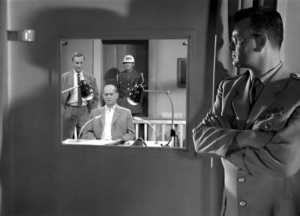
56. For Eyes Only (East Germany, 1963)
I’m not gonna lie: as a spy thriller, this is a taut yet low-key affair (loosely based on actual espionage operations) that pulls off many of the usual tropes with average competence and some groovy music. What makes For Eyes Only stand out is that, because it’s an East German production, the film fully reverses the genre’s typical geopolitical perspective: the hero is a Stasi agent who infiltrates Western secret services to prevent an attack against the East (thus implicitly validating the defensive construction of a protective Berlin Wall…). It even finishes with a chase scene in which, for once, the protagonist is desperately trying to cross the border *into* the GDR! (Recently, the show Deutschland 83 started off with a similar premise, but it had such a cynical depiction of the East that it ended up falling for the usual Western stereotypes… whereas For Eyes Only is the real deal, without any retroactive sense of irony or self-reflection.)
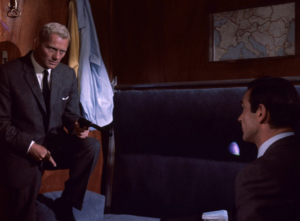
57. From Russia with Love (UK/USA, 1963)
James Bond goes to Istanbul to help a sexy Russian cipher clerk defect to the West, even though he knows damn well the whole thing is bound to be a trap. Like in most 007 pictures, the main villain is not the USSR itself, but a third party exploiting the Cold War (although the Soviets are nonetheless generally coded as evil).Besides being an obvious counterpart to the likes of For Eyes Only, this is also a spiritual opposite of A Prize of Arms: here, everyone acts as if Britain is still a major geopolitical player in the new world order, Suez and decolonization be damned. The formula and themes apply to practically all of the Bond film series, so this entry stands as representative of the entire franchise. (From Russia with Love was always my favorite… at least until 2006’s Casino Royale came along!)
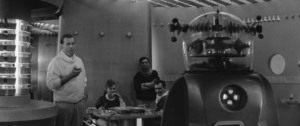
58. Ikarie XB 1 (Czechoslovakia, 1963)
Interested both in outer space travel and in the evolution of earthly society, this sci-fi masterpiece about a ship searching for life in Alpha Centauri, in 2163, visualizes a utopia where the Cold War is ancient history and mechanization has freed workers from most physical labor (to the point that the astronauts actually seem bored in the first stretch of the film, before the adventure kicks in), even if there is still lingering gender, racial, and generational inequality. Ikarie XB-1 probably feels even more fantastic now than it did at the time… In just a few years, the Soviets had launched into orbit the first satellite, the first dog, and the first cosmonaut, to which JFK responded by promising – accurately, as it turned out – to put a(n American) man on the moon before the end of the decade. At the time, therefore, Czechoslovakian imagination could credibly accommodate these future paths of both technology and socialism. (Stay the fuck away from the botched US version, titled Voyage to the End of the Universe!)
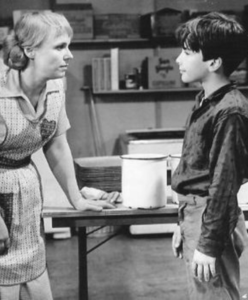
59. Ladybug Ladybug (USA, 1963)
Reverberations of the Cuban Missile Crisis start to hit the screen. Set in a countryside elementary school where the nuclear attack warning suddenly goes off, Ladybug Ladybug follows the varied reactions of teachers and students, from disbelief and growing terror to Lord of the Flies shenanigans and a melancholic acceptance of mortality. Sure, with the focus on children comes some blatantly manipulative sentimentalism, but for the most part the movie gets a lot of mileage out of the naturalistic acting, the understated direction, the characters’ believable behavior, and a chilling ending (all of this makes for a stark contrast with the similarly themed – yet hysterically reactionary – Panic in Year Zero!).
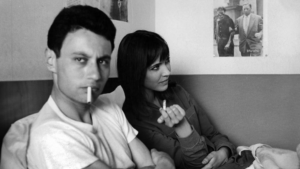
60. The Little Soldier (France, 1963 [1960])
While the Algerian War gave us the greatest war movie ever made (The Battle of Algiers) and arguably the greatest musical (The Umbrellas of Cherbourg), they fully disregard the Cold War dimension. In turn, The Little Soldier follows a French agent caught between his own secret service and communists fighting for the independence of Algeria. This description makes it sound too linear, though… That’s in the film, for sure, but also everything else that Jean-Luc Godard felt like shooting at the time. The result is often baffling, but provocative enough for it to have gotten banned in France until the end of the war.
Another dazzling reminder that comics can be awesome…
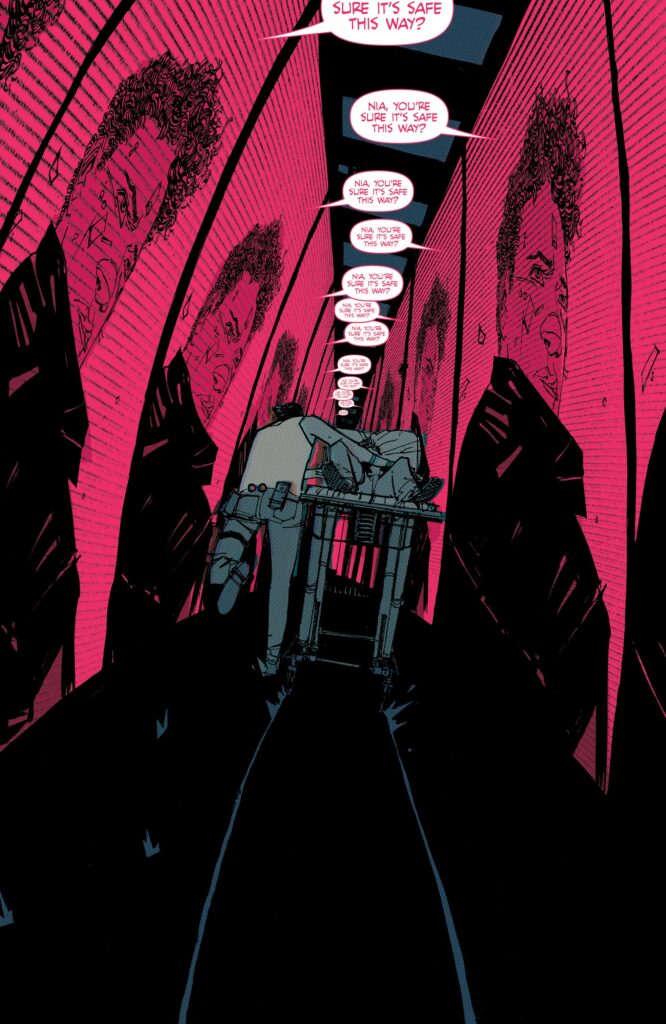
Thumbs #1
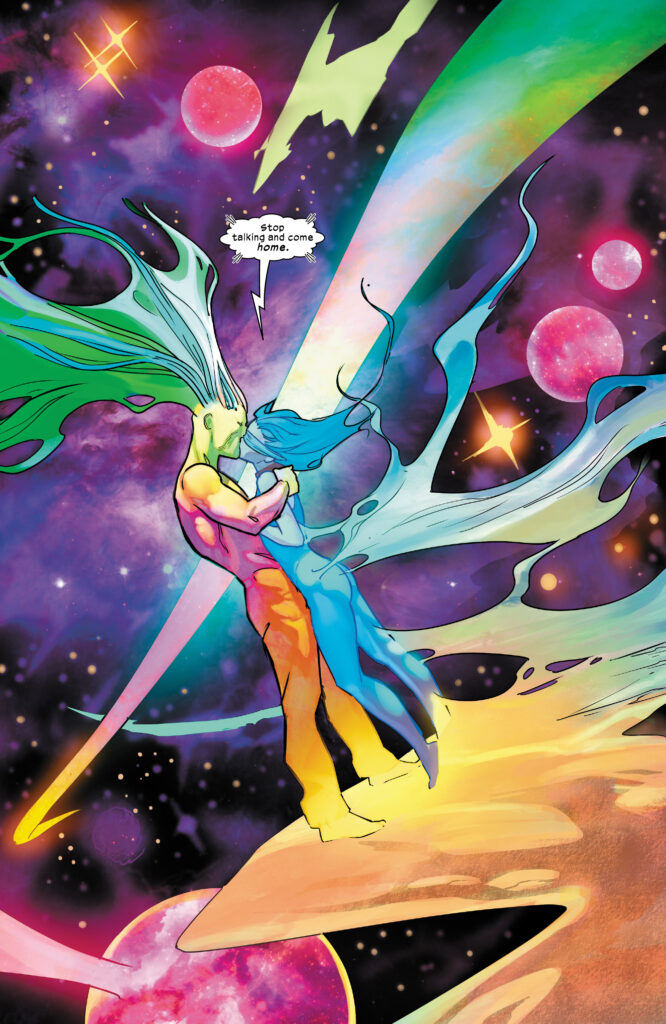
Legion of X #1
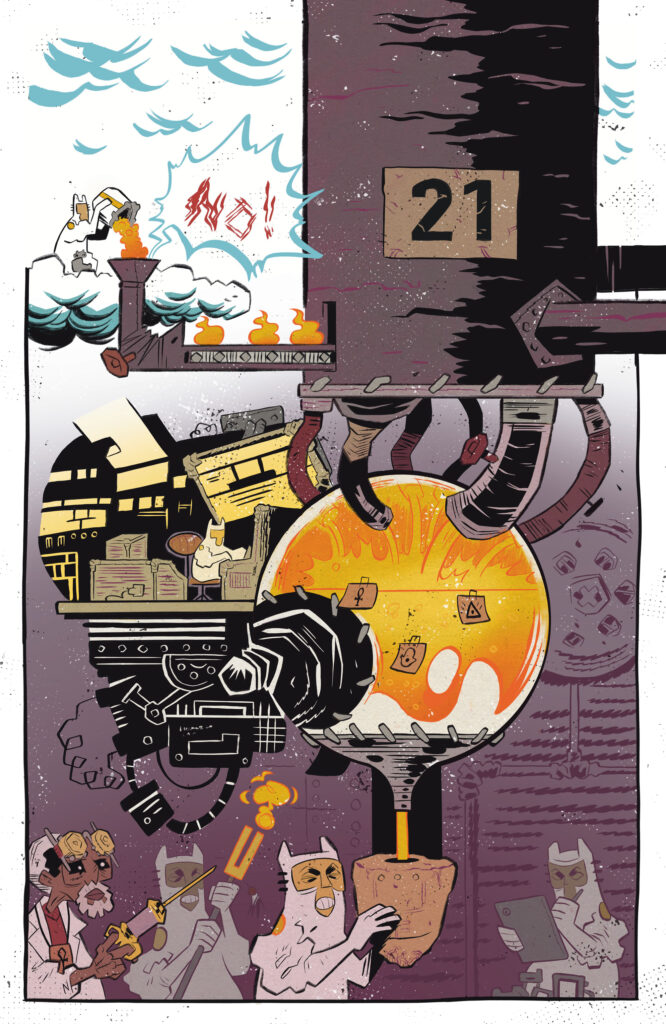
Monkey Meat #1
As much as Ed Brubaker’s work can be hit-and-miss for me, he remains one of those writers – like Garth Ennis or Warren Ellis – whose comics I always end up checking out, sooner or later. For one thing, their books tend to be pretty damn readable, in a ‘comfort food’ sort of way. But it’s more than that: even if I don’t love all these authors do, I feel like I get where they’re coming from and it’s interesting to see their latest take on familiar motifs.
For instance, Brubaker keeps going back to the culture he consumed in his youth and reimagining it through older eyes, with a more mature sensibility and characterization.
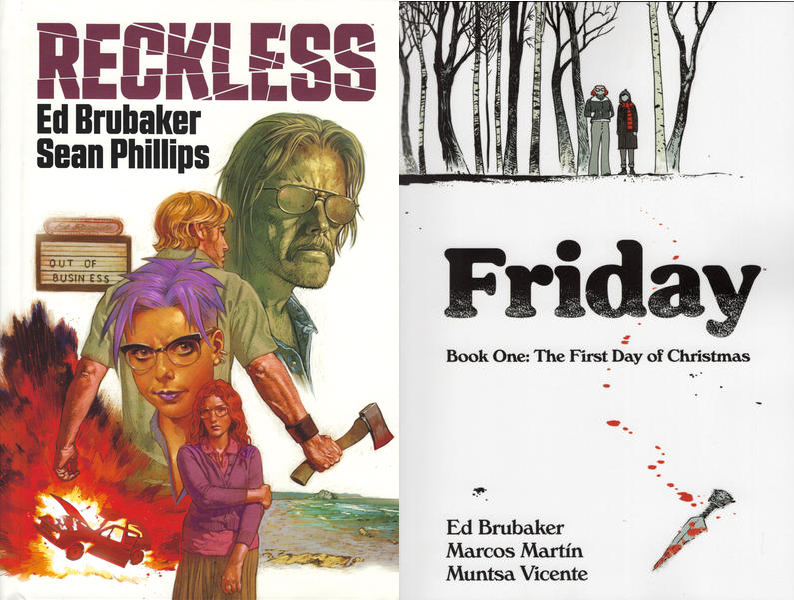
One of the most satisfying of Ed Brubaker’s regular collaborations with artist Sean Phillips has been a series of graphic novels about the exploits of Ethan Reckless (yep), a badass Vietnam vet whom people hire to solve their problems (usually through violence) when they can’t go to the authorities. Brubaker has presented this as a throwback to the John D. MacDonald-style pulp novels he read growing up, with their lurid painted covers and cool thrillers about manly adventurers, criminals, spies, and private eyes.
The premise certainly feels like an adolescent fantasy: working without a boss and only when he feels like it, in his downtime Ethan Reckless is a surfer who lives in an abandoned movie theater where he gets to watch his favorite classics on the big screen. The setting of 1970s-80s’ California likewise feels informed by nostalgia… which is not to say that Reckless posits a rose-tinted view of the era. Rather, the books fully embrace those decades’ bleaker, seedier elements, from the rise of skinheads and CIA’s dirty ops all the way to predatory real estate deals and post-hippie cults.
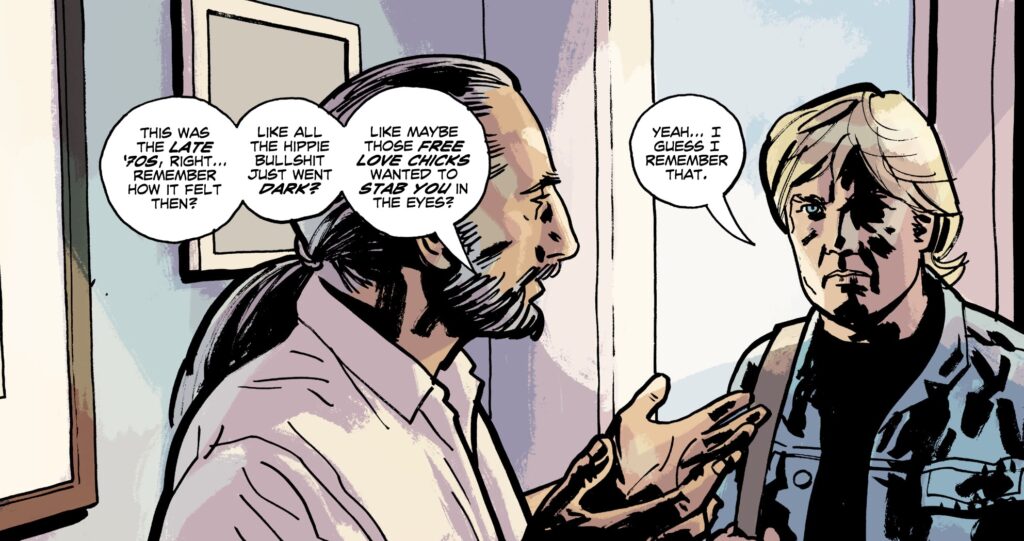
Friend of the Devil
Although sharing a neo-noir style and story beats, each book has its own identity. The second volume, Friend of the Devil, is a Chandleresque detective story in Hollywood, which is something Brubaker excels at. The third one, Destroy All Monsters, despite the bombastic title, is more of a low-key character study about friendship. And if that one fleshes out the character of Ethan Reckless’ punk assistant Anna, she effectively becomes the protagonist of the fourth book, The Ghost In You, which is a mystery yarn with hints of weird horror. And then came Follow Me Down, a devastating take on the woman-on-a-vengeful-rampage subgenre (with obligatory nods to Hannie Caulder and The Bride Wore Black) against the backdrop of a San Francisco still recovering from the 1989 earthquake.
Thanks to Brubillips’ dependable, confident storytelling (developed over twenty-plus years of collaboration), every single one of these has been a treat. Sure, there are still the occasional condescending passages (like when Ethan explains directly to the reader that he’s looking at microfiches because there weren’t digital cameras or laptops back in the 1980s), but I’ve even come to accept the overexplanatory inner monologues (which make every motivation explicit) as just another form of narrative clarity and comfort.
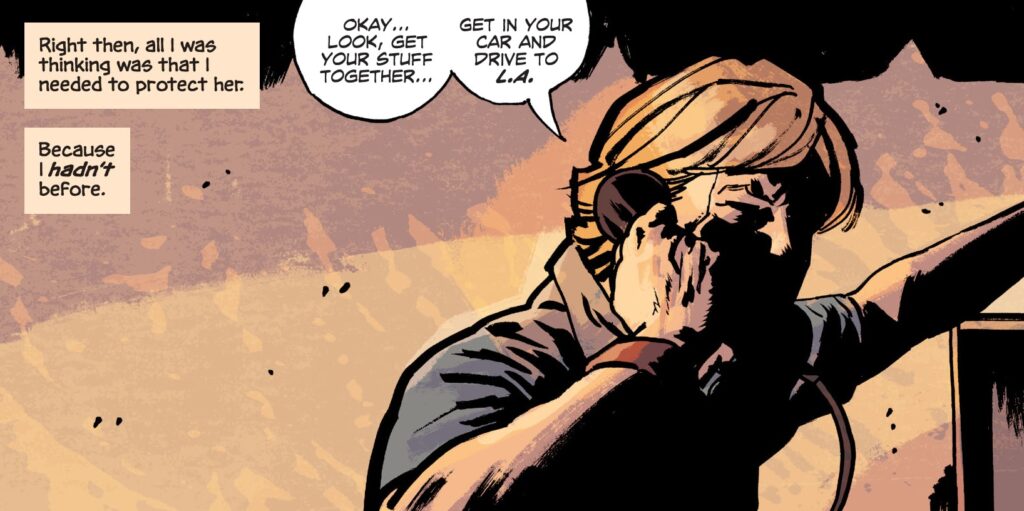
Reckless
Hell, after a while, this just becomes part of Ethan Reckless’ personality – it’s is just how he thinks, constantly justifying his actions. And the framing devise (for the most part, at least) is that Ethan is writing his memoirs in the 21st century, so I can see the tendency to oldmansplain as coherent with his authorial voice.
Moreover, as it’s often the case, what helps sell these books is Sean Phillips’ efficient, unflashy artwork. Although the word-heavy storytelling doesn’t leave much room for visually driven action, Brubaker wisely relies on Phillips to set the right the mood – which he consistently nails, in part due the addition to the team of colorist Jacob Phillips, with his knack of evoking Los Angeles’ peculiar light (especially in the beautiful surfing scenes), just as he did for Texas in That Texas Blood (an absolute must-read for fans of Criminal and Reckless).
This creative trio reunited for an unconnected project, the standalone graphic novel Night Fever, but there my praise is more uneven. Brubaker was hardly in top form, penning a derivative Eyes Wide Shut-ish midlife-crisis narrative about a family man on a business trip to Paris who gets involved in a nighttime adventure where he gets to act out stereotypical male fantasies (recently, you could find a much more ingenious spin on this type of tale in Brandon Cronenberg’s Infinity Pool). In turn, the two Phillips outdid themselves, bringing to life an eerie atmosphere that is suitably enigmatic, nightmarish, and erotic.
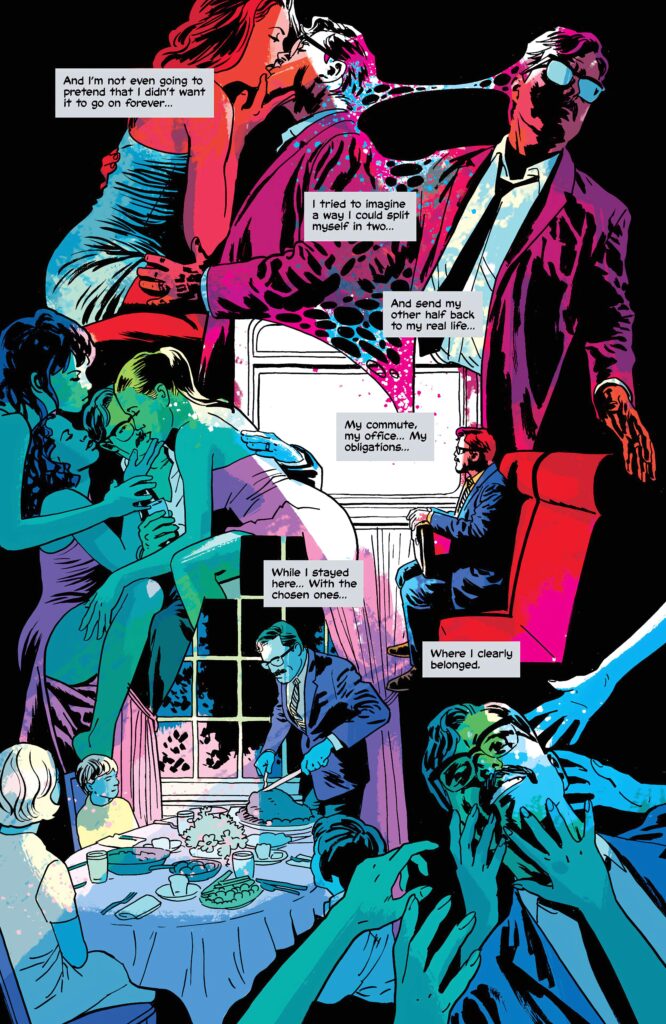
Night Fever
The other great duo who has been working with Ed Brubaker are artist Marcos Martín and colorist Muntsa Vicente, his collaborators on Friday, a series about a couple of former child detectives – now in their late teens – who get involved an atypically violent case.
The artwork in this one is particularly lovely. On top of some inventive page layouts, the delicate designs and wintery palette capture a certain sense of fading innocence and quaint small-town life, both evoking the gentle milieu of the likes of Encyclopedia Brown and imbuing it with a newfound melancholia. This creates the perfect balance for Brubaker to engage with the emergence of more mature and conflicted feelings…
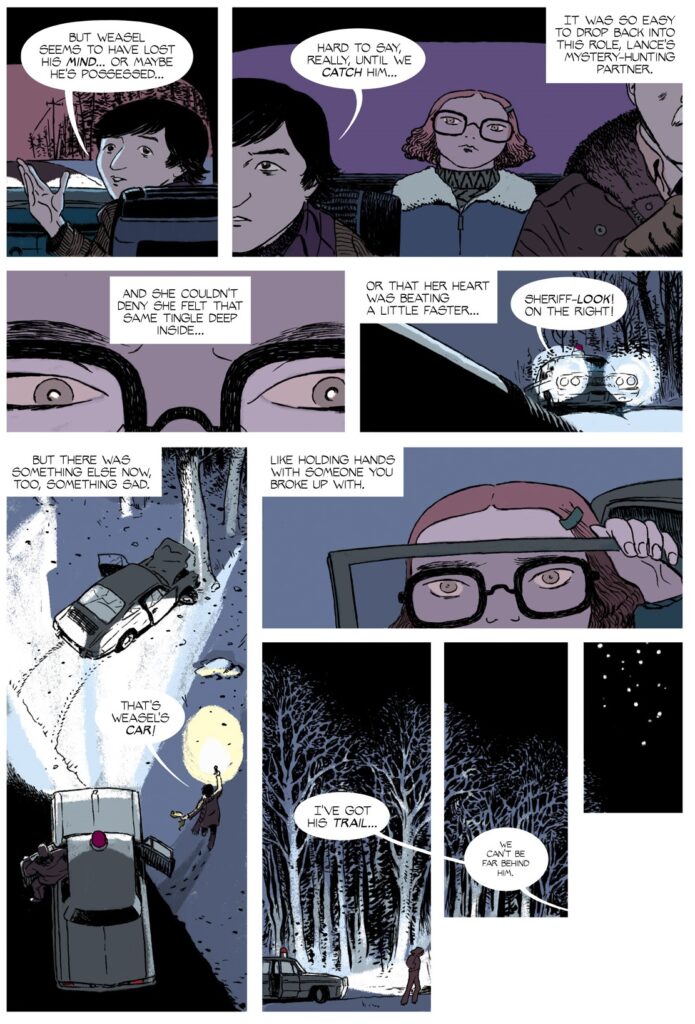
Friday #1
Not that you need much intertextual baggage to appreciate Friday… Even if you’ve never read the sort of mysteries the series is riffing on, the comic does a solid job of establishing the premise and character types as it follows an intriguing investigation (with a supernatural flavor).
That said, this is a series about growing up and the metafictional element does enhance its thematic strength. Ed Brubaker has called Friday post-YA fiction, in that it involves bringing adult themes into YA concepts (or, as a librarian reader has pointed out in the letters section, ‘middle grade’ rather than ‘young adult’ concepts). In that sense, it is a return to the gesture he did in the Criminal arc ‘The Last of the Innocent’ – and something that a number of other creators have had a stab at in recent times (none of them more hilariously than John Allison in Wicked Things).
Because Friday is a Brubaker comic, though, growing up doesn’t just mean handling more responsibilities and becoming more aware of the world’s complexity. It means shit will get dark.
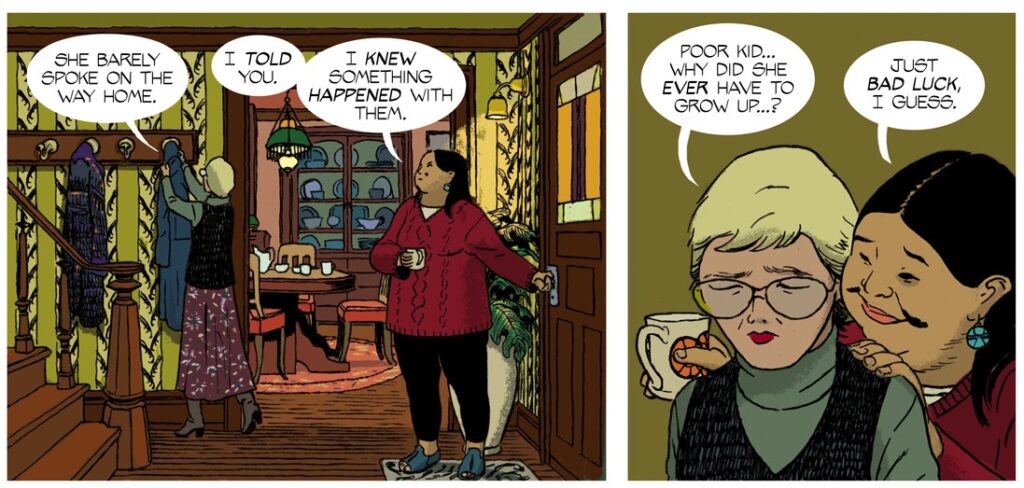
Friday #2